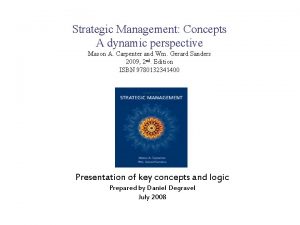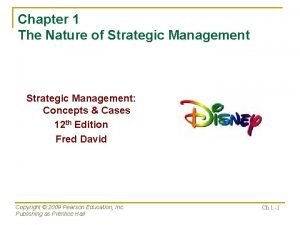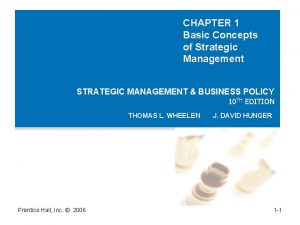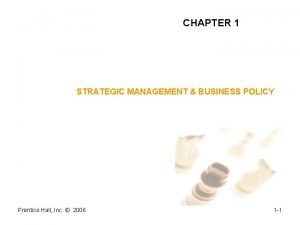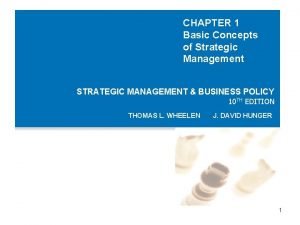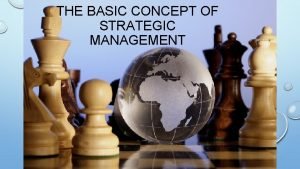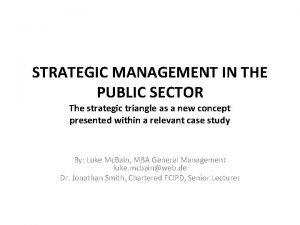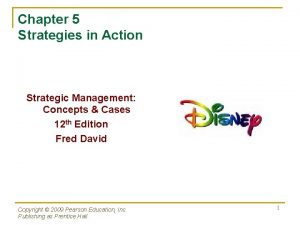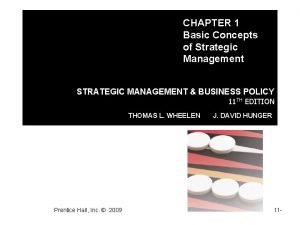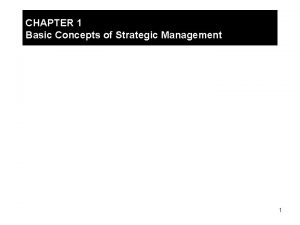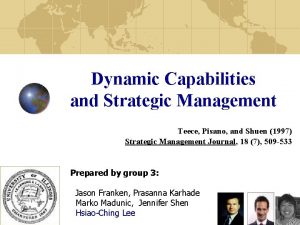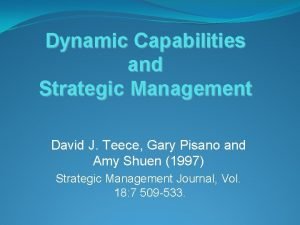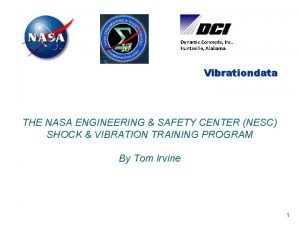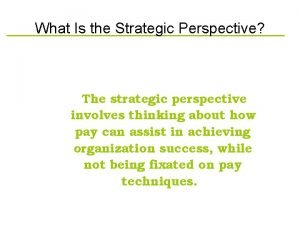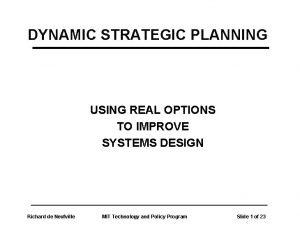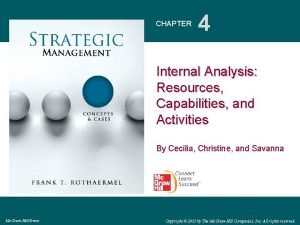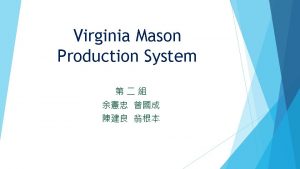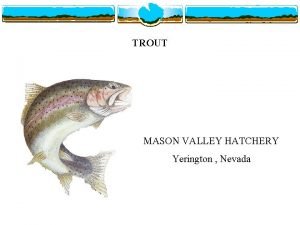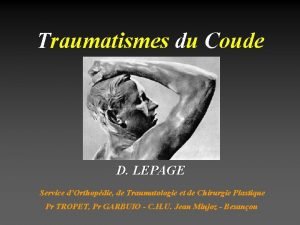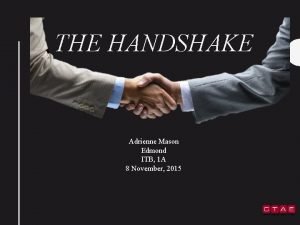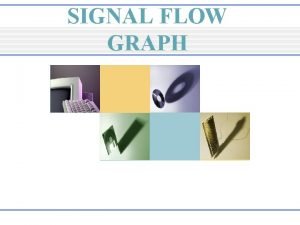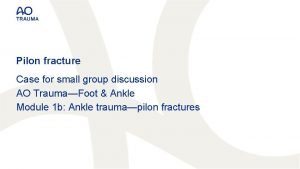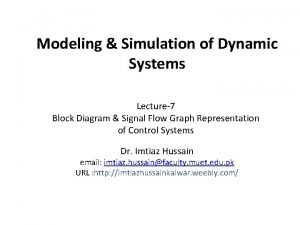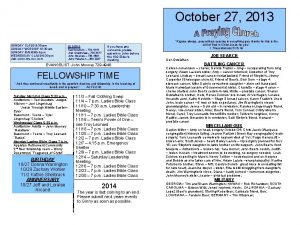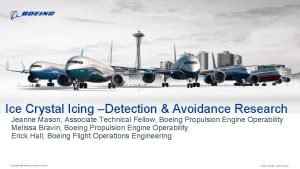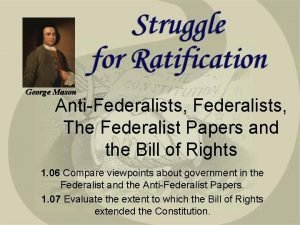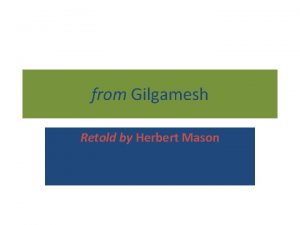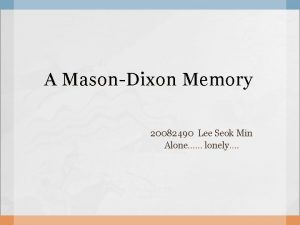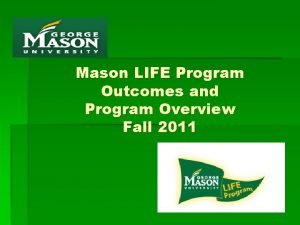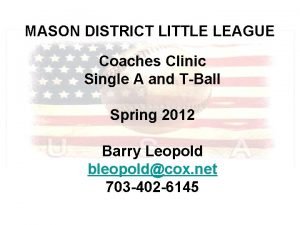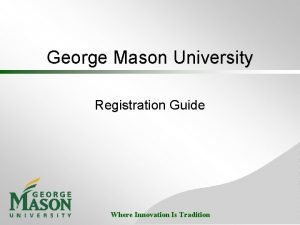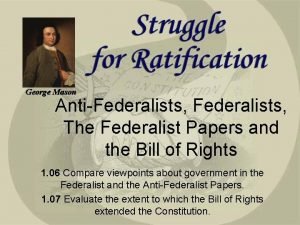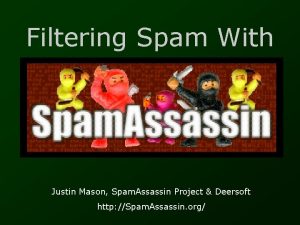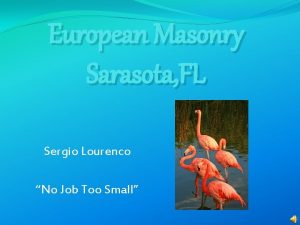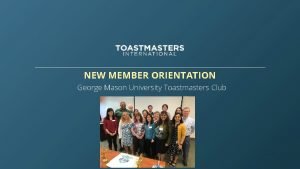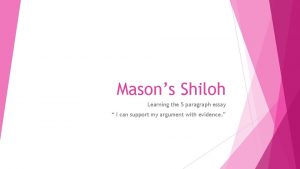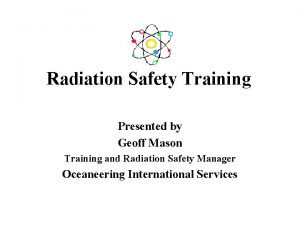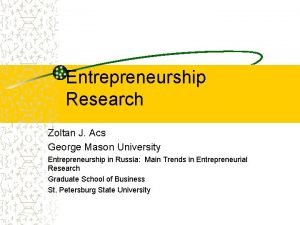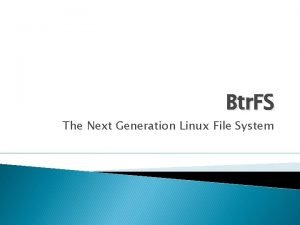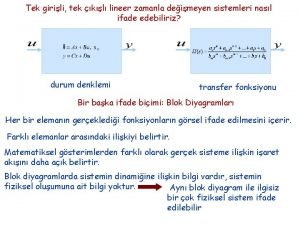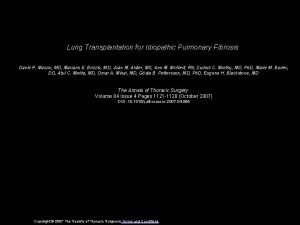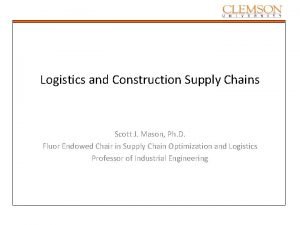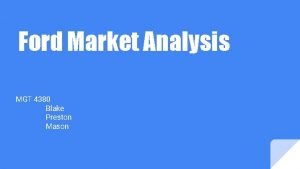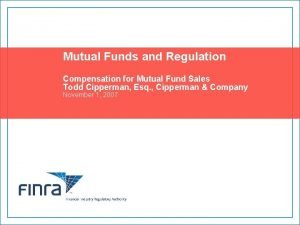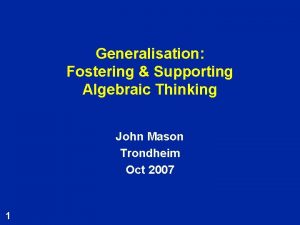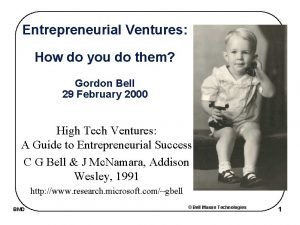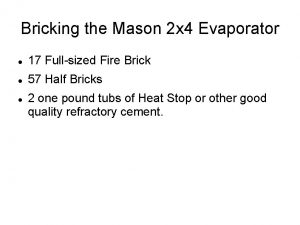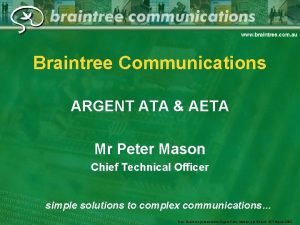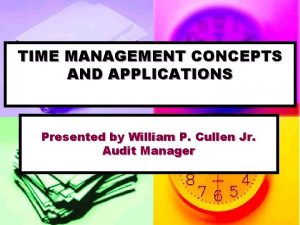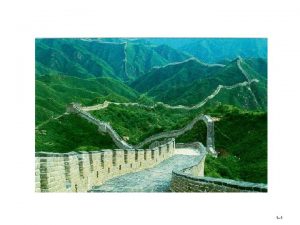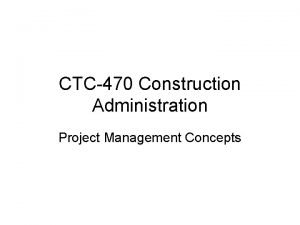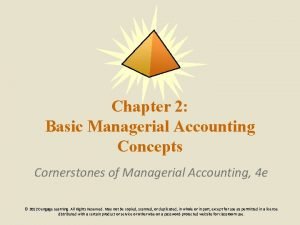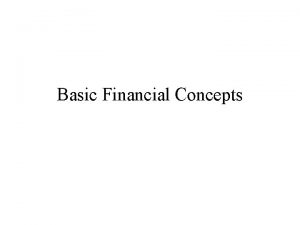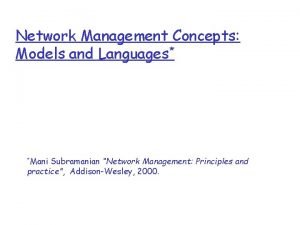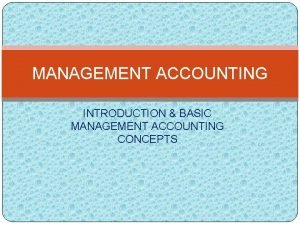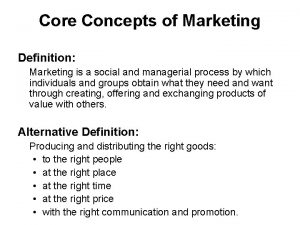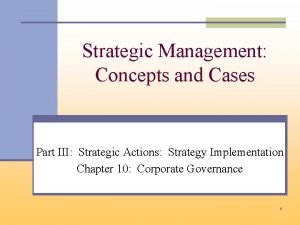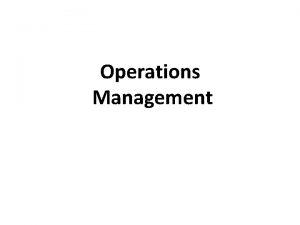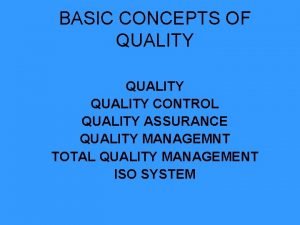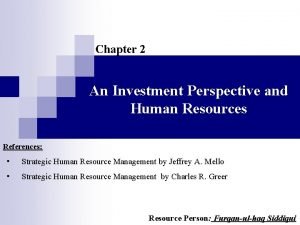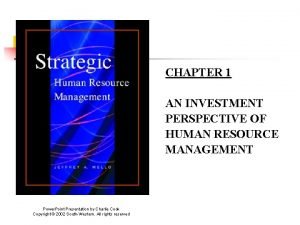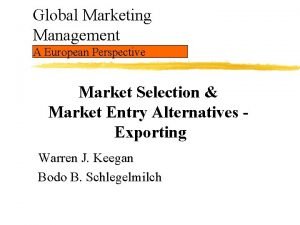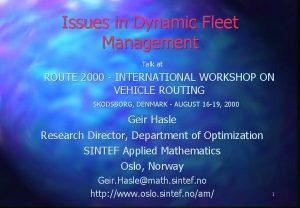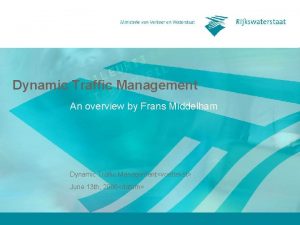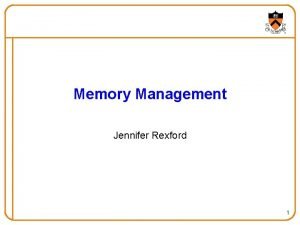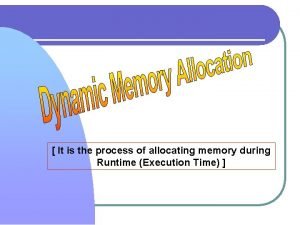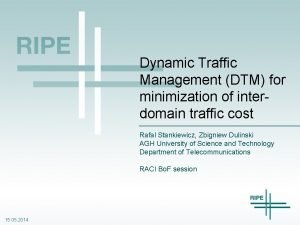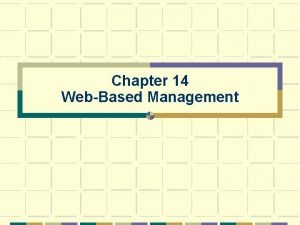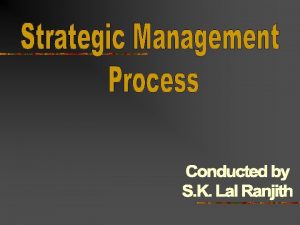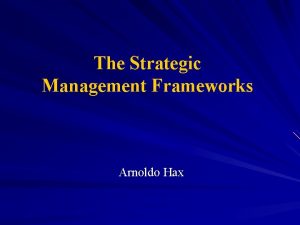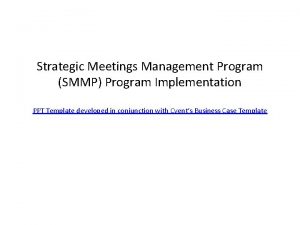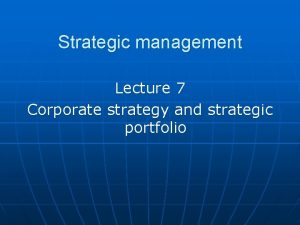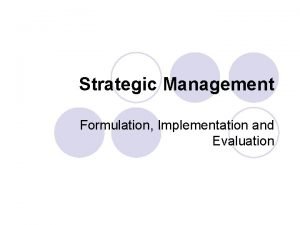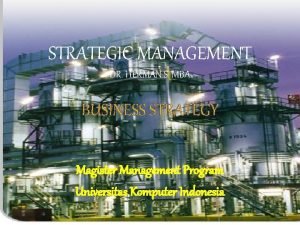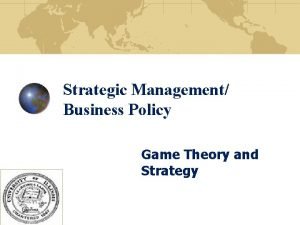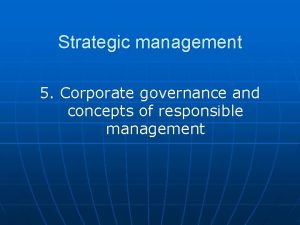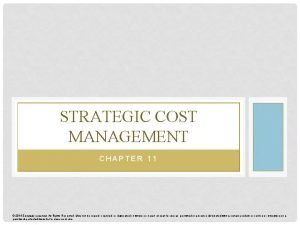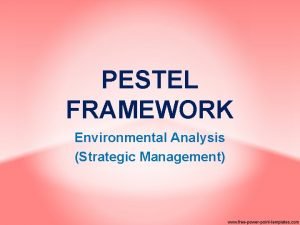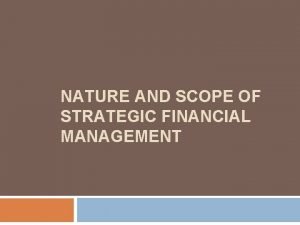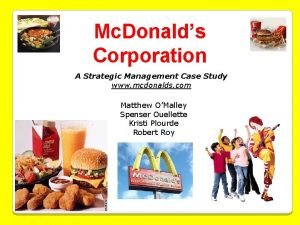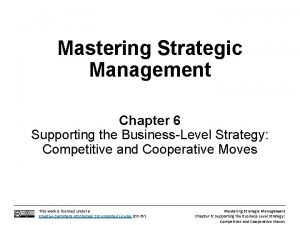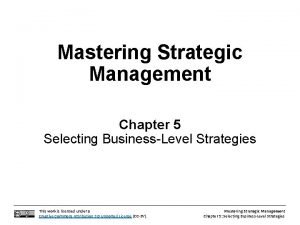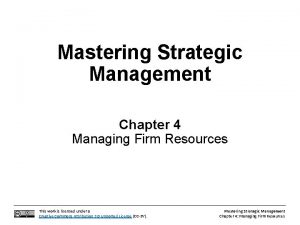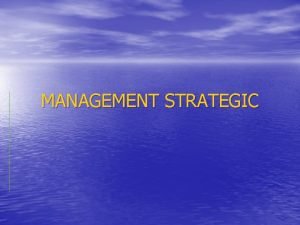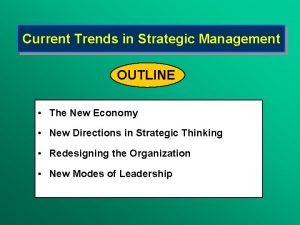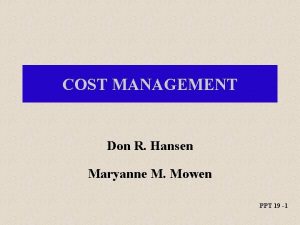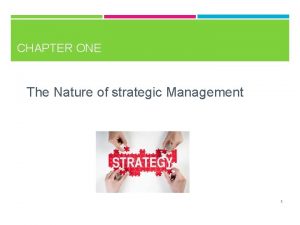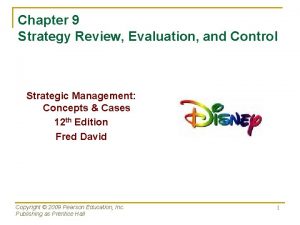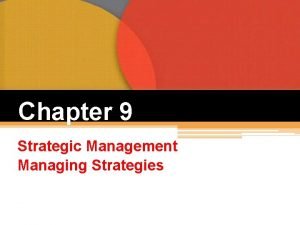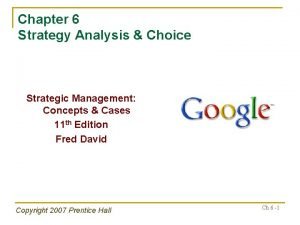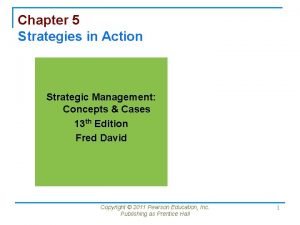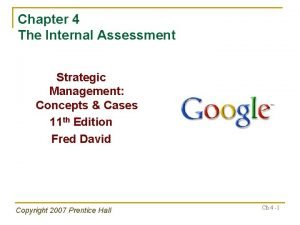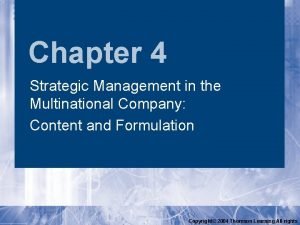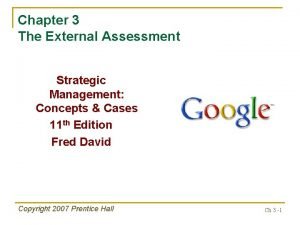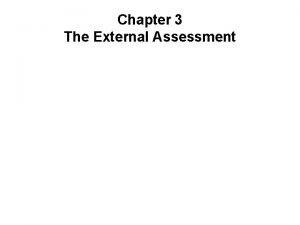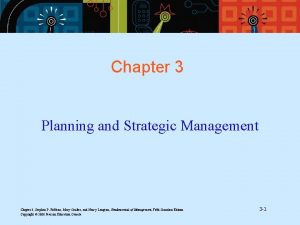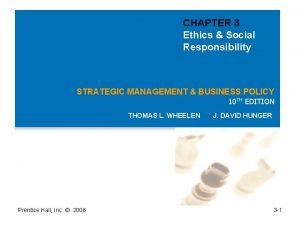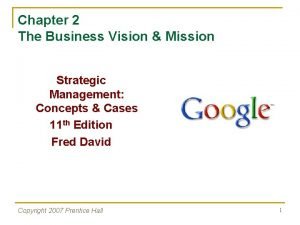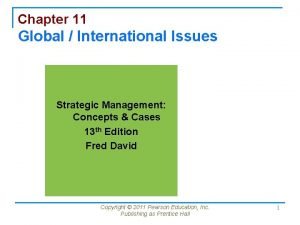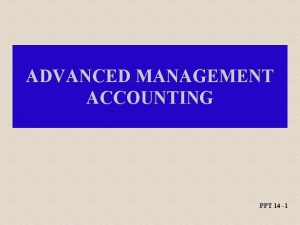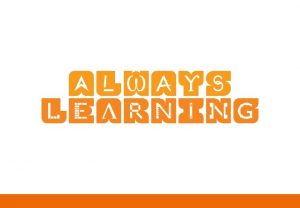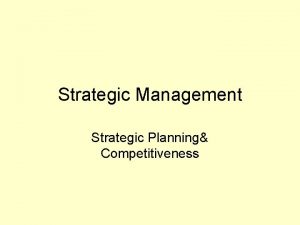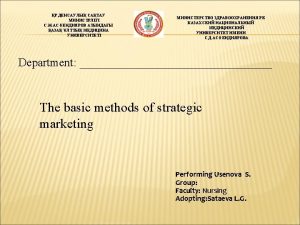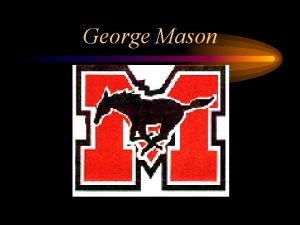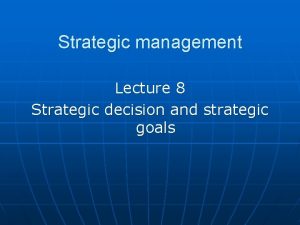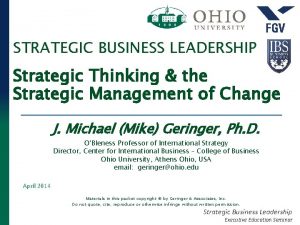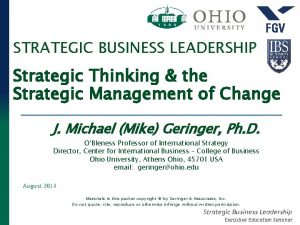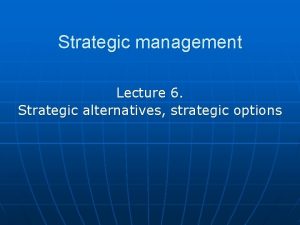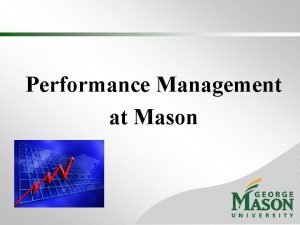Strategic Management Concepts A dynamic perspective Mason A











































































































































































- Slides: 171

Strategic Management: Concepts A dynamic perspective Mason A. Carpenter and Wm. Gerard Sanders 2009, 2 nd. Edition ISBN 9780132341400 Presentation of key concepts and logic Prepared by Daniel Degravel July 2008

002 Ch 01 Introducing Strategic Management Introduction Strategy and strategic management Components and dimensions of strategy Competitive advantage Strategic management process

Ch 01 Introducing Strategic Management 003 Introduction Birth and life of Under Armor: illustration of strategic management Objective of textbook: 7 “study of concepts that you will need to answer questions about gaining Strategic management relies upon three fundamental themes and sustaining success in the world of business competition” 1 -Time (dynamic industries and firms) 2 -Link between strategy formulation and implementation 3 -Role of strategic leadership

004 Ch 01 Introducing Strategic Management Strategy and Strategic Management 10 Strategy = coordinated view by which an organization pursues its goals and objectives, including the pattern of actions that have been taken or planned 9 Strategos = “General’s view”; a plan that will lead to victory 9 Big-picture perspective on firm and its context 8 Strategic management = process by which a firm manages the formulation and implementation of its strategy Why should we study strategy? Understanding business situation Acting in the situation Personal career and issues

Ch 01 Introducing Strategic Management 005 Components and dimensions of Strategy Corporate strategy Business strategy Diamond of strategy Levels of strategy A Strateg y Time B Arenas Economic logic Differentiators Vehicles

Ch 01 Introducing Strategic Management 006 Components and dimensions of Strategy Implementation levers C Strategic Leadership Strateg y D Formulation + Implementation Formulation Implementation Structure People and rewards Systems and processes Intended Deliberate Unrealized Emergent Realized

007 Ch 01 Introducing Strategic Management Competitive advantage 22 Competitive advantage = firm’s ability to create value in a way that its rivals cannot Two plus one perspectives on competitive advantage (and on strategy) 1 -External I/O Firm’s environment determinant 2 -Internal RBV Ownership of capabilities determinant 3 -Dynamic Time is key Present is partially determined by past but future is open

Ch 01 Introducing Strategic Management 008 Strategic management process Strategic analysis 3 Vision and Mission 1 Goals and objectives 2 Outside Inside STRATEGY 4 Implementation

009 Ch 02 Vision and Mission (Leading strategically)

010 Ch 02 Vision and Mission (Leading strategically) Introduction Strategic leadership: definitions and characteristics Strategic leadership: defining Vision and Mission Strategic Purpose and strategic Coherence Stakeholders “management” Strategic decision-making: biases and ethics

Ch 02 Vision and Mission (Leading strategically) 011 Introduction Anne Mulcahy CEO of Xerox since 2000 p 31 -33 Background of the firm Anne Mulcahy’s actions as CEO Xerox’s turnaround story: to pull a $15 bn cow out of a ditch

012 Ch 02 Vision and Mission (Leading strategically) Strategic leadership: definition and characteristics 33 Leadership = task of exerting influence on other people’s pursuit of goals in an organizational context 33 Strategic leadership = task of managing an overall enterprise and influencing key organizational outcomes Responsibility Powerless to control Authority but enemies and resentment Cleat strategy? Reactive and defensive? Symbolic and substantive impact on organizational outcomes No time for hands-on management High personal price Congratulations, you are a CEO!

Ch 02 Vision and Mission (Leading strategically) 013 Strategic leadership: definition and characteristics ROLES Complex and multifaceted FORMAL Authority and status DECISIONAL Entrepreneur Disturbance handler Resource allocator Negotiator INFORMATIONAL Monitor Disseminator Spokesperson INTERPERSONAL Figurehead Liaison Leader

014 Ch 02 Vision and Mission (Leading strategically) Strategic leadership: definition and characteristics SKILLS Level 5 Leaders Pyramid Professional Will and ACTION Professional Modesty L 5 Executive S L 4 Effective leader International skills L 3 Competent manager Quality of human capital L 2 Contributing team member Substantive work experience L 1 Highly capable individual Talent for strategic thinking Groups tend to make better decisions 44 -45 HWYDT (43 social capital, succession planning) Mapping social network BACKGROUND and DEMOGRAPH PERSONALITY Tolerance for ambiguity or risk Locus of control Need for achievement Charisma and emotional intelligence Work experience and education Gender, nationality, race , religion… Reasons for more diversity Personality traits vs. Leadership abilities. Because top managers influence strategy by Courage, toughness judgment and behavior, it is worthwhile to understand what makes them think and act the way they do

015 Ch 02 Vision and Mission (Leading strategically) Strategic leadership: defining Vision and Mission 46 Vision (long term status) 46 Mission (Values, purposes and relations with stakeholders) 47, 49 Goals and Objectives 49 ROIC 49 Superordinate goals 49 Balanced scorecard Strategy

Ch 02 Vision and Mission (Leading strategically) 016 Strategic purpose and strategic coherence Vision and Mission do not guarantee high performance 52 Strategic coherence = symmetrical alignment of the strategic diamond, functional area policies and overarching fit of businesses under corporate umbrella 50 Strategic purpose = simplified, widely shared model of the organization and its future, including anticipated changes in environment Accepted as truthful and useful by stakeholders Fit Tradeoffs and options Effective strategic purpose must be tied to a coherent set of activities, near-term goals and objectives anchored in measurable strategic outcomes Strategic / Tactic / Design Environment / Vision / Mission / Strategy CL-S / BL-S Diamond 5 elements

017 Ch 02 Vision and Mission (Leading strategically) Stakeholders “Management” 52 Stakeholders (Interest + Power) Benefits of STo Management: Importance of TMT as stakeholder -Support and better strategic choice -Win more resources -Full understanding of STo -Anticipate STo’s reaction Management STo: Identification of STos Dimensions used Three groups a) Influence of STo on strategy b) Effects on strategy on STo c) STO’s power on strategy STos’ Management Plan Approach Objective Message to convey Actions 58 -59 HWYDT Tritec JV Chrysler-Daimler Benz Analysis of STo

Ch 02 Vision and Mission (Leading strategically) 018 Strategic decision-making: biases and ethics Ethics violation: Vulnerability of organizations Authority structure Incentive system 61 Corporate governance Strategic decision biases Theories about ourselves (escalation of commitment) Theories about other people Ethnocentrism; stereotyping) Theories about the world

019 Ch 03 External environment: Resources, capabilities and activities

020 Ch 03 External environment: Resources, capabilities and activities Introduction Internal drivers of competitive advantage Resources and capabilities Dynamic capabilities Value chain Strategic leadership: linking R&C to strategy

021 Ch 03 External environment: Resources, capabilities and activities Introduction Intel and its CEO Paul Otellini 69 -72 World largest computer chip maker $35 bn Innovation and massive R&D Evolution of the environment and transition from memory chips to micro-processor, which started from the bottom of the hierarchy and was not planned Licensing its technology then revoked these licenses and controlled the value chain

022 Ch 03 External environment: Resources, capabilities and activities Internal drivers of competitive advantage Why some firms perform better than others? DIFFERENTIATOR of strategy diamond Chapter focuses on internal characteristics of the firm or the resource-based inputs into the strategy process; these are resources and capabilities. Role of managers in configuring activities and managing R&C is also explored For Intel: 1 -engineering expertise for technology creation 2 -operational efficiency 3 -marketing skills Texas Instruments Grocery industry: Publix, Whole Foods, Weis Strategic leadership (an learning) Internal source of competitive advantage Two models Dynamic capabilities or R&C model Available R&C are source of competitive advantage Value chain model Configuration of value chain activities in way that add more value to PS than rivals

023 Ch 03 External environment: Resources, capabilities and activities Internal drivers of competitive advantage Resource s Strategic leadership And Capabiliti es Strategy Competiti ve advantage Performanc e

024 Ch 03 External environment: Resources, capabilities and activities Resources and capabilities 76 Resources = inputs that firm uses to create PS 76 Tangible 76 Intangible Resources are more likely to be a source of competitive advantage because more difficult to imitate for rivals However, distinction Tangible – Intangible not so clear and some Tangible resources may deliver Intangible benefits 76 Wal*Mart and quasi monopoly in rural areas that locks out potential rivals because “no room for two” 76 Union Pacific Railroads controls key rail property gives competitive advantage in transportation of certain materials 76 Mc. Donalds has high valuable real estate because of location close to high traffic areas

025 Ch 03 External environment: Resources, capabilities and activities Resources and capabilities 77 Capability = Competency = firm’s skill in using its resources to create a PS; combination of procedures and expertise 77 Outsourcing 77 Distinctive competence = set firm apart from other firms because unique 77 Core competence = central to the main business operations of Capabilities vary in level (degree of complexity of task) and in location firm (embedded into individuals or owned by firm at global level) Globally the capabilities are activities that constitute the value chain A special class of capabilities is the “dynamic capabilities” R&C are linked and collectively represent the differentiators (strategy diamond) 77 Wal*Mart has excellent capabilities in logistics management (large store, fleet of vehicles, massive distribution centers) 77 Table with capabilities and result for Wal*Mart, The Vanguard Group and 3 M 77 -78 GE has general management capabilities because manages a portfolio of businesses based on sound principles 78 Intel 78 Oil industry: BP, Chevron; Exxon Mobil; Royal Dutch Shell. Only downstream activities in value chain of industry are Valero Energy; Sunoco which do not have any oil exploration activity 78 Mc. Donalds

026 Ch 03 External environment: Resources, capabilities and activities Resources and capabilities 79 VRINE model = Valuable = take advantage of opportunities or protects from threats Rare = scarcity relative to demand not Imitable = cannot acquire capability quickly or at low cost Non substituable = cannot achieve same benefit with different capability (cost; property rights; time, causal ambiguity) Exploitable = must be usable and the value can go out of the capability 80 Union Pacific Railroad 81 Mc. Donalds opens restaurant into Wal*Mart store; Burger King and Wendy 81 Monsanto owned patent for aspartame; Pfizer, Levitra, Cialis 81 Toyota, Honda 82 Barnes & Noble, Borders; Amazon. com 82 Cisco purchased Cerent to acquire fiber-optic-data-transfer capabilities 82 media companies and property rights 82 Coca cola and time; subsidizing of American government for entry overseas; Pepsi at disadvantage 83 Causal ambiguity: Apple, Google, 3 M and Toyota 84 Nowell and its core Net. Ware product were successful. But no innovation and decline. Sun Microsystems 84 Xerox 84 Pfizer 85 Pfizer and VRINE model 84 Coca cola, Toyota, Intel

027 Ch 03 External environment: Resources, capabilities and activities Dynamic capabilities Vision quite static until now. However, developing capabilities is dynamic process Static vs. Dynamic Stock vs. Flow A stock of resources and capabilities is what is possessed at any point in time. This stock was created over time through a combination of initial endowment and accumulated investment Value of R&C is function of level (stock) of R&C and the net effect of additional investment and depreciation Process of accumulation through dynamic capabilities is different from static possession of R&C 86 Dynamic capabilities = processes by which a firm integrates, reconfigures, acquires or divests resources in order to achieve new configurations of R&C. The term “Dynamic” refers to the ability to modify and revise its R&C to match a shifting environment, especially critical in fast moving markets and is typically seen in complex areas of the firm (culture, knowledge and ability to learn).

028 Ch 03 External environment: Resources, capabilities and activities Dynamic capabilities are manifest in several ways: -Creating new P S -Reconfiguring or transferring R&C across divisions -Building alliances and acquisitions Value of firm’s portfolio of R&C directly affected by dynamic capabilities to reconfigure R&C to the evolving environment 86 Disney and Princess line based on famous female Disney characters 86 Mail Boxes Inc. MBE (UPS) 86 Intel 86 Cisco and its acquisitions 87 Intel organizational processes Dy Ca nami pa c bil itie s Resources Activities s a Routines Cap b ie ilit

029 Ch 03 External environment: Resources, capabilities and activities Value chain 87 Value chain = set of activities performed within the firm to produce P S 87 Primary activities 87 Support activities Issues of : -Outsourcing -Creation of value by better way to perform same activities or different ways to perform these activities 89 Trade-off protection = modification of activities implies elimination or addition of other activities. This necessity is a protection against imitation Protecting competitive advantage is developing different activities than rivals but in such a configuration that they cannot be imitated without significant trade-offs, locking-out imitators 88 Beverage distribution firm in Kern county, CA using trucks to transport products to LA, use trucks back to Kern 89 Caterpillar, Komatsu 89 -90 Southwest Airlines, and classic US airlines comparison Exhibits 3. 8 and 3. 9. The trade-offs they must make 91 Change of activities and value chain of Ikea, Dell and Southwest

030 Ch 03 External environment: Resources, capabilities and activities Value chain Du. Pont Formula breaks down determinants of profitability based on equation: Return On Assets = Net profit margin x Asset turnover 91 ROA 91 Asset turnover 91 Profit margin 92 Exhibit detail of formula 94 -95 Illustration of Du. Pont formula in retailing industry: Wal*mart, Sears, and Kohl’s Value chain helps to see which activities must be in-house and those that can be performed outside 92 Outsourcing 92 Off-shoring Not new but broader choices now for managers 92 Ikea 92 Boeing and 787 93 Nike and Pacific Cycle 93 Baker & Mc. Kenzie law firm (team in Manilla) Three criteria for successful offshoring and outsourcing

031 Ch 03 External environment: Resources, capabilities and activities Strategic leadership Managers are key because at root of actions 96 Decision agent Issue of “fait accompli” (96 Intel) Issue of large vs. small firms managements Portfolio of processes: -96 Entrepreneurial -96 Capability-building -96 Renewal -Middle managers have important role (entrepreneur; communicator; psychoanalyst; tightrope walker) -Front line managers Du. Pont Formula breaks down determinants of profitability based on equation:

032 Ch 04 Macro and industry dynamics Exploring external environment

033 Ch 04 Macro and industry dynamics Introduction External context of strategy Macro-environment Industry analysis Dynamic characteristics of the external context

034 Ch 04 Macro and industry dynamics Introduction 103 Ford vs. Chevrolet battle for money but also for customers’ hearts and minds 103 -106 Pepsi vs. Coke Pepsi fighting hard to catch up with Coke Restaurant business (KFC, Taco Bell and Pizza Hut), spun off with Yum Brands and finally sold off Change into core carbonated soft drinks industry Strategic wins are moving target Fight between Coke and Pepsi Value-chain of industry four functions: Production, marketing, packaging, and distribution Bottling operations Finally, the industry… good for Pepsi and Coke

035 Ch 04 Macro and industry dynamics External context of strategy Necessity to understand environment because source of opportunities and threats Broad sense Narrow sense Tools to perform analysis of competitive environment Some industries are more profitable than others 107 Coke and Pepsi Coca-Cola’s entry into wine industry in 1977, purchasing Taylor Wine and Sterling Vineyard. Finally sold them off. Two fundamental characteristics of wine industry: little brand loyalty; sale and distribution heavily regulated Tools to understand factors related to industry and relevant to firm performance at any point in time In fact, an industry “snapshot”

036 Ch 04 Macro and industry dynamics External context of strategy Key questions about industry: -What is industry? -Macro-environmental conditions that would impact your strategy implementation? -Trends? -Characteristics of industry? ME IE SG F

037 Ch 04 Macro and industry dynamics Macro-environment 109 PESTEL analysis = non exhaustive list of potential influences of environment on organization; focuses on future impact of macroenvironmental factors (110 Exhibit 4. 3 Dimensions) Make sure strategy is aligned with forces of change 109 Lands End (online clothier) expanded operations from US to Germany Local regulations were obstacle 1 -Relevance of factors to context 2 -Identify and categorize information 3 -Analyze data and draw conclusions 109 Political 110 Economic 111 Socio-cultural 111 Technological 111 Environmental 111 Legal 111 Coke and Pepsi 111 Coca-cola

038 Ch 04 Macro and industry dynamics Macro-environment 111 Globalization Factors favoring industry globalization 1 -Markets 112 Coke and Pepsi; Boeing and Airbus 2 -Costs 112 Pharmaceuticals; Coke and Pepsi; Boeing and Airbus 3 -Governments 4 -Competition 113 Railroad industry 113 Cell-phone industry 113 Motorola and Nokia 113 Samsung and NEC

039 Ch 04 Macro and industry dynamics Industry analysis If perfect competition, no firm can earn greater-than-normal profits, because of entry of new firms or exit of incumbents if profit level raises above or below “normal” If imperfect competition, abnormal profit possible Few competitors; numerous suppliers and buyers; asymmetric information; heterogeneous PS; barriers Firm’s goal is to create a competitive advantage Industrial Organization Economics (internal conditions held constant) 114 Key Success Factors in soft drink industry In I/O approach, assets and strategy are dictated by industry characteristics Then, every firm must possess assets and so not rare KSF does not give competitive advantage but only allows to compete KSF are easily transferable

040 Ch 04 Macro and industry dynamics Industry analysis Industry boundaries 115 Industry = group firms producing or selling same or similar PS to same markets 115 Monopoly 115 Duopoly 115 Oligopoly 115 Concentration ratio Concentration affects intensity of competition (fragmented markets more competitive than concentrated ones) Boundaries not simple as it seems; industries are composed of many segments with different structural characteristics Classification of P or markets 115 Beverage industry Lipton, Starbucks, Seagram’s, Heineken, Mondavi, Ocean Spray, Coke and Pepsi 116 Carbonated soft drink industry 116 Cola war: Coke bought Minute Maid and Odwalla; Pepsi bought Tropicana and South Beach beverages 116 Nestle, Pepsi, Coke, Danone 116 Food industry 116 Apparel industry

041 Ch 04 Macro and industry dynamics Industry analysis Model of Industry structure 117 Industry Five-force model P 5 F Horizontal axis is stylized version of value chain Factors that alter negotiating strengths suppliers, buyers or rivals and threats of NE and PS Countervailing sources of power vying for larger piece of industry’s profit 117 Rivalry 119 Exit barriers 119 Threat of entry 119 Barriers to entry 121 Supplier power 122 Buyer power 123 Threat of substitute 124 Complementors Attractiveness of industry P 5 F benefits: 1) Understanding of industry (Characteristics, changes, fit) 2) Strategy fit with 5 forces 118 Cola wars 119 Software industry Microsoft; airline industry; Litton Industries ship building and the Navy 119 Computer-chip manufacturing 120 Soft drink industry; Virgin group 120 Barriers to entry list for 6 industries 121 Soft drink industry; Jewelry industry and De Beers; Textiles or wood; Furniture; ERP software and SAP, Oracle and People. Soft 122 Tire makers; National Football League Green Bay Packers; New car buyers 123 Large brewers; Matsushita Electric Industrial; Best Buy and Circuit City 123 Bottled waters and soft drink; Movie rental industry Blockbuster, Hollywood Video, Movie Gallery and Netflix; Southwest airlines 124 Table of substitutes for 6 industries 124 Music and electronics industries; Hot dogs, buns, condiments and beverages; United and delta 125 Computer peripherals; commercial real estate development and financing 126 -127 P 5 F and Complementors analysis US airline industry

042 Ch 04 Macro and industry dynamics Industry analysis Competitor analysis: understanding and predicting the rivals’ behaviors and strategies Future competition; opportunities for growth Sources of information 128 Bicycle industry: Trek, Huffy, Schwinn 128 -129 Luxury hotels: Marriott, Hyatt, Motel 6, Best Western 129 Airline industry 128 Value curve = tool for visualization of landscape, visually plot how rivals compete on several dimensions and reveal underlying assumptions about business Cognition Underlying assumptions about industry, best business practices, and the world Underlying strategic logic Horizontal axis is KSF s perceived by competitors; Vertical axis is level of delivery of major groups of firms 129 Strategic group = clusters of firms following the same strategy, generally assessed by the central tendency Predicting competitors’ behaviors and responses to your own strategy; reasonable predictions For future behavior, most pertinent rivals are those in the strategic group or susceptible to enter it Future rivals’ behavior can influence your strategy Four step analysis 1) Rivals’ objectives 2) Rivals’ current strategies 3) Rivals assumptions 4) Rivals’ R&C 129 Coke and Pepsi 130 -131 Value curve in the wine industry Competitors

043 Ch 04 Macro and industry dynamics Dynamic characteristics of the external context Overconfidence in one’s strength is often preclude to decline Durability of competitive advantage varies with industry 132 Coke and Pepsi 132 Utilities 132 Consumer products Sears and Wal*Mart 132 Airline industry Southwest, Jet Blue, AA, United airlines 132 -133 Pineapple industry Fresh Del Monte, Chiquita, Dole Two drivers of industry change Industry life cycle Discontinuities

044 Ch 04 Macro and industry dynamics Dynamic characteristics of the external context Industry life-cycle A storybook where P 5 F and structure of industry evolve over time Comparable to product life-cycle 133 Industry life-cycle = model describing evolution of industry from inception to present and possible future states 133 Cell phone handsets, laser printer, digital cameras 133 Automobile industry emerged in 1885 with invention of gasoline engine 134 Exhibit 4. 10 Impact of P 5 F factors on industry structure dynamics 133 -134 Commoditization = process by which sales eventually become to depend less on unique product features and more on prices. Generally, most of incumbents have similar R&C and offer similar products 134 Cell phone, airlines, PC 135 Reinvigoration = growth again 135 Bicycle industry Evolution and information: new entrants replace leaders 136 IBM, Dell Evolution and tactics: extra services at beginning 136 IBM and Compaq

045 Ch 04 Macro and industry dynamics Dynamic characteristics of the external context Technological discontinuities A special and intensive case of technological change in action 136 Process technology 136 Product technology 136 Incremental evolutionary change 136 Discontinuous change = breakthrough technology 137 Disruptive technologies = breakthrough technology that destroy incumbents’ competencies 137 Mini computer industry, disk drive industry 137 Innovator’s dilemma = the economic incentive are to continue to develop evolutionary improvements in their existing technology and to avoid sponsoring disruptive technology, even when the latest may eventually supplant the existing technology 137 DEC and mini computers 138 Exhibit showing interplay between incumbents and new entrants innovations 138 Notebook computers and handheld digital appliances; full-service stock and online brokerage; printed and online greeting cards; education and distance education; offset printing and digital printing; cardiac surgery and angioplasty 139 Auto industry Toyota, Honda 139 Airlines Southwest 139 Wal*Mart, Sears 139 US Stell

046 Ch 04 Macro and industry dynamics Dynamic characteristics of the external context When industries divide Emergence of new market; large enough to dedicate a distribution channel 139 3 Com Corp and its Palm division 139 Sony, Compaq, Dell making hardware and Palm and Microsoftware 139 Category killers Pet. Smart; Home Depot and Lowe’s; Amazon. com; Barnesand. Noble. com; Travalocity. com and Expedia. com When industries collide 140 Consolidation = reduction in the number of industries 140 Global media and entertainment industries are agglomerating Fox, Disney, Viacom and Vivendi Universal 140 Fed. Ex-Kinko’s 140 Computer industry has changed faster than steel industry

047 Ch 05 Creating Business strategies

048 Ch 05 Creating Business strategies Introduction Types of strategies Economic drivers of strategic positioning Threats to successful competitive positioning Strategy and fit with industry conditions Testing the quality of a strategy

049 Ch 05 Creating Business strategies Introduction 145 -147 The US bicycle industry Three companies with different strategic orientations 1 - Pacific Bicycle High volume, large range of products, large range of quality, distribution through massmarket retailers, all market segments, one-stop shop, lots of acquisitions, manufacturing in Asia 2 - Trek Bicycle Upper-end users, high quality bikes, innovation, different market segments served, one distribution channel: independent bicycle distributors 3 - Montague Boutique-style, full size high performance folding bicycle Highly specialized product targeted at narrow range of customers Through Business strategy, we will try to find the best configuration of positions

050 Ch 05 Creating Business strategies Types of strategies To reduce complexity of strategic choices, a typology “generic strategies” is used 148 Strategic positioning = the way managers situate a firm relative to its rivals along important competitive dimensions Strategic positioning aims at reducing the effects of rivalry and improve profitability 148 Trek 149 Auto industry: Daimler Benz and Porsche; Luxury cars: Buick, Lexus, Mercedes 149 Generic strategies = Four alternative positions resulting from two sets of choices: the economic logic and the scope of arenas 150 -151 COST vs. DIFFERENTIATION 150 Exhibit 5. 1 Generic strategies with examples of firms 151 Cost = strategic position where firm produces PS while maintaining total costs lower than it takes to rivals to produce similar PS. Basic needs; acceptable PS Creation of sustainable gap with rivals 151 Porsche, category killers such as Lowe’s and Staples 151 Wal*Mart, Pacific Bicycle, Gallo WInes

051 Ch 05 Creating Business strategies Types of strategies COST 151 Cost = strategic position where firm produces PS while maintaining total costs lower than it takes to rivals to produce similar PS. Basic needs; acceptable PS Creation of sustainable gap with rivals 151 Porsche, category killers such as Lowe’s and Staples 151 Wal*Mart, Pacific Bicycle, Gallo Wines 152 Wal*Mart and Southwest airlines DIFFERENTIATION 150, 152 Differentiation = condition of perceived PS uniqueness along different possible dimensions that causes customers to pay premium prices (more satisfied needs and WTP) Higher prices than average 152 Coca-cola and Pepsi, Mercedes reputation 152 Honda, Yamaha and Suzuki 153 Stouffers FOCUSED 153 Focused Cost and Differentiation = Serves narrow segment 153 Jet. Blue, Southwest airlines 153 Montague, Trek, Cannondale, Mercedes, Porsche, Ferrari, Harley-Davidson, Orange County Choppers INTEGRATED 154 Integrated C-D = position of simultaneous low cost and differentiation Trade-offs required, difficult to achieve 154 Mc. Donalds, Toyota 155 Ikea, Chevrolet, Hyundai, Ford

052 Ch 05 Creating Business strategies Types of strategies Appropriate strategic position depends on: 1 - Firm’s R&C 2 - Industry conditions Innovation capabilities encourage Differentiation Capabilities in large scale production encourage Cost 156 Intel 156 Dell 156 Cooper Industries acquiring and consolidating firms in tool, hardware and electrical products

053 Ch 05 Creating Business strategies Economic drivers of strategic positioning Key Economic drivers of generic strategies COST DIFFERENTIATION Economies of scale Diseconomies of scale Premium brand image Minimum Efficient Scale MES Learning curve Customization and convenience Unique Styling Speed Product technology Product design Unusually high quality Creating value and promoting Willingness to Pay WTP Economies of scope

054 Ch 05 Creating Business strategies Economic drivers of strategic positioning Key Economic drivers of Cost strategies 157 Economies of scale = average total cost for unit of production is lower at higher levels of output 157 Coca-cola, Audi, Wal*Mart 158 Diseconomies of scale = average total cost increases with higher levels of output Sources: spreading fixed costs, specializing in a process, superior inventory management, purchasing power, more efficient advertising because of size Most important: spreading fixed costs Sources: Bureaucracy, labor costs, differences in efficiency 158 Institutional fund management, Microsoft, GM 159 Minimum Efficient Scale MES = output level that delivers the lowest possible cost; the smallest scale to achieve maximum economies of scale (there is range of scales at which costs will be minimized) Function of technology 159 Steel industry: mini-mills using different furnaces. Requirements for technology different

055 Ch 05 Creating Business strategies Economic drivers of strategic positioning Key Economic drivers of cost strategies 160 Learning curve = incremental production costs decline at a constant rate as production experience is gained Cumulative level of production since production of first unit Sources: learning by doing, intraorganizational transfer of knowledge Forecasting future costs 160 -161 Japanese motorcycle and car manufacturers 161 Computer-chip manufacturers 161 Bank clerk, electrical contracting firm 162 Fast-food trainee, custom boat builder 162 -163 Illustration of learning curve at bicycle manufacturer Montague 164 Economies of scope = potential cost savings associated with multi-business 164 Multipurpose table and furniture industry Mity Lite and folding tables, expansion into complementary products 165 Production technology 165 Jet Blue, Nucor Steel 165 Product design 165 Canon and Xerox, Pacific Cycle and Trek Sources: resource sharing

056 Ch 05 Creating Business strategies Economic drivers of strategic positioning Drivers of Differentiation advantages Premium brand image 165 Toyota Customization and convenience 166 Curves International 166 Swiss Colony Unique Styling 166 Harley Davidson, Honda Speed 167 Intel, Dell, Apple, Microsoft Unusually high quality 167 Apple, Dell, Red Robin and Fuddruckers (hamburgers), Mc. Donalds, Wendy, Burger King Creating value and promoting Willingness to Pay WTP 167 Willingness to Pay

057 Ch 05 Creating Business strategies Threats to successful competitive positioning Several factors play a role Successful strategic position: 1 - is based on firm’s R&C 2 - must be consistent with industry conditions Exhibit 5. 10 Drivers and threats for Cost and Differentiation Cost Imitation Acceptable combination quality-price Public awareness of questionable practices in offshoring 168 Mini-mills in steel industry, Kmart vs. Wal*Mart Differentiation Customer does not care about added value Misunderstanding of costs entailed by differentiation Over-fulfillment Imitation 168 Audi, BMW, Mercedes, BMW, Jaguar 169 Ford, John Deere, Coke and Pepsi Focus positions Integrated position Same than above plus being out-focused by rivals, attempting to satisfy too many segments 169 Harley Davidson Same than above plus (169) straddling 169 H&R Block trades-off between 170 Southwest airlines, United and Delta

058 Ch 05 Creating Business strategies Strategy and fit with industry conditions Capturing effect of industry on strategy Under different life-cycle conditions Embryonic Growth Maturity Decline 171 Exhibit 5. 11 Industry lifecycle and strategy diamond 172 Palm, camcorder, color TV, VCR, cell phone 172 Biotechnology 172 US Bicycle 172 Wal*Mart 172 -173 General Dynamics

059 Ch 05 Creating Business strategies Testing the quality of a strategy Firm Five key questions 1 -Does strategy exploit firm’s R&C? 2 -Does strategy fit with industry conditions? 4 b- 3 -Are differentiators sustainable? 4 -Is there internal and external alignment of strategy diamond? 12 - 5 -Can strategy be implemented? 4 a. Differentiators sustainability 3 - 5 -

060 Ch 06 Crafting business strategy for dynamic contexts

061 Ch 06 Crafting business strategy for dynamic contexts Introduction Strategy and dynamic contexts Revolutionary strategies that lead industry change First movers, second movers, and fast movers Defensive strategies for incumbent caught off-guard Formulating and implementing dynamic strategies

062 Ch 06 Crafting business strategy for dynamic contexts Introduction 181 -183 Roxio and the resurrection of Napster Chris Gorog was Napster’s CEO -Free client software enabling people to copy music on their PC and play it for free -Central Napster-run server dispensing information about music The RIAA attacked Napster on legal grounds and Napster went bankrupt in 2002 Gorog has created a new software firm Roxio, that acquired Napster after it filed bankruptcy. He re-launched Napster as a legal download music provider site Which model to choose? Roxio sold it software business to Sonic Solutions in 2004 Napster has never shown a profit

063 Ch 06 Crafting business strategy for dynamic contexts Strategy and dynamic contexts How can firms develop competitive advantages in dynamic environments? Change may be rapid and unpredictable Challenge is anything that may threaten the VRINE R&C (value, common, imitation, substitutability, ability to exploit) For apparently fast change, often seeds have developed for a long time Response to changes and to dynamic competition Dynamic response requires: -trade-off between economic logic of Cost and Differentiation -permanent improvement -strategy to be “revolutionary” (changing rules of the game) -seamless integration formulation - implementation

064 Ch 06 Crafting business strategy for dynamic contexts Strategy and dynamic contexts The challenges Interactions between incumbents and new entrants Competitive interaction theory Competitive interaction 186 Four phases of competitive interaction 185 Four Competitive action initiations: -aggressiveness -complexity of answer -unpredictability -tactics to delay leader’s reaction 185 Regional title insurance 185 -186 Nike and Reebok 185 -186 SABMiller and Anheuser Busch 187 Enterprise, Amazon. com, E*trade, Charles Schwab, Nucor, Southwest, Jet. Blue, Ryanair Industry evolution 187 Life-cycle Commoditization Industry evolution 187 Technological discontinuity 187 Technological disruption 187 Process innovation 187 Application innovation 187 Business model innovation 187 Charles Schwab, Toyota, GM, Amazon. com 188 Progressive Direct, Sony, Apple, Napster, Boeing Speed of change tends to compound effects of change drivers Reacting to change vs. Leading change

065 Ch 06 Crafting business strategy for dynamic contexts Revolutionary strategies that lead industry change No naïve vision of industry analysis which is not static but always changing -Large incumbents -Imitators -Rule breakers Revolutionary strategies Three families: Five categories 189 High-end disruption 189 Low-end disruption 190 Hybrid disruption 191 Reconceive PS 193 Reconfigure value chain 196 Redefine arena 197 Rescale industry 198 Reconsider competitive mindset 189 Mc. Donald, s, Hertz, Blockbuster 189 Burger King, Avis, Hollywood Videos 189 Subway, Enterprise, Netflix 189 Cirque du Soleil 189 Southwest airlines 190 Amazon. com, Jet. Blue, Charles Schwab, University Phoenix, Merrill Lynch 190 Exhibit 6. 2 Revolutionary strategies table with examples

066 Ch 06 Crafting business strategy for dynamic contexts Revolutionary strategies that lead industry change 191 Reconceive PS Creating new value Curve Four-action framework Separating function and form 193 Reconfigure value chain Radically new value chain Compress value chain 196 Redefine arena Changing temporal or geographic availability Imagine total possible market Spearheading industry convergence 197 Rescale industry Increase scale Decrease scale 198 Reconsider competitive mindset Creating complementors (198 Value Net) Shift in focus of strategic thinking 191 Cirque du Soleil 192 Wine industry Yellow Tail 194 -195 Capsule Yellow Tail 193 Credit card 193 Amazon. com, Skype, e. Bay 193 -194 Dell, Ikea 196 Fast food, Wal*Mart, Target, Grocery stores, Airlines, Mc. Donalds, Coinstar 196 Disposable cameras and children, Copeland 196 Ti. Vo 197 Mobile music revolution, cell phone, Play station 2, Ericsson and Napster 197 Service Corporation International, Holliday Inn, Mc. Donalds, Waste management services, Adult education 198 Micro breweries, Bed & Breakfast Inn 199 GM, Fed. Ex and UPS and Land’s End; Novel software and PC; Delata and American and Boeing; Micron and Apple and Lexar

067 Ch 06 Crafting business strategy for dynamic contexts First movers, second movers, and fast movers Approach to technology discontinuities depends on R&C 200 First mover 200 Second mover 200 Fast mover 201 Takeoff period 201 Late mover Competitive advantage comes from ability to manage change and harness the R&C consistent with F or S Mover strategies Role of complementary assets PROS First Mover 201 Amazon. com, Barnesand. Noble. com, MS, Palm, Boeing, Atari, Apple, de. Haviland 201 Wal*Mart, Unilever, Procter & Gamble 203 Cancer therapy, PC-software applications 202 Gallery of first movers and fast followers (Exhibit 6. 9 p. 202) CONS Absolute cost advantage in terms of scale or scope Technological change Strong reputation PS flawed First –time customers locked-in Cost outweighs benefits of F Mover position Scale of first move makes imitation unlikely

068 Ch 06 Crafting business strategy for dynamic contexts Defensive strategies for incumbent caught off-guard Resource-based competitive advantage is a position in which the exploitation of a resource makes the resource stronger and more resilient Success of strategy depends on strengths and weaknesses Five competitor-response strategies 204 American, Southwest, retail 1 -Containment 204 -205 MS, Napster, Bertelsmann, Roxio 2 -Neutralization 3 -Shaping 205 AMA and Chiropractic medicine 4 -Absorption 205 MS, Intuit 5 -Annulment 205 -206 Kodak, IBM, EDS, HP-Compaq, Lenovo Any firm that invests in R&C that support retaliation to the exclusion of innovation and change may only be prolonging its inevitable demise 206 Ralston Purina, Nestle

069 Ch 06 Crafting business strategy for dynamic contexts Defensive strategies for incumbent caught off-guard Real option Waiting for uncertainty to clear Real option = opportunity to take action that will either maximize the upside or limit the downsize of a capital investment A small investment that will allow to have an option on making a bolder move later 1 -Waiting-to-invest options 2 -Growth options 3 -Flexibility options 4 -Exit options 5 -Learning options 207 Intel 207 Oil and gas, mining, pharmaceuticals, biotechnology 207 Auto, aerospace, consumer goods, industrial products, high tech

070 Ch 06 Crafting business strategy for dynamic contexts Formulating and implementing dynamic strategies Implementation of revolutionary strategies Role of arena Role of staging Exhibit 6. 11 p. 209 Creating options for future competitive advantage -Current businesses -Emerging new businesses -Future growth businesses Tactical moves can be used as low cost probes for experimentation in new ways of competing tomorrow Speed and rhythm of change Implementation levers: systems, procedures, leadership and processes 209 Home pesticide, Dell 210 Charles Schwab, E*Trade, Merrill Lynch, 3 M 210 Examples of pacing in the real world

071 Ch 07 Developing corporate strategy

072 Ch 07 Developing corporate strategy Introduction Corporate Strategy Economic logic of diversification: synergy Types of diversification Strategies for entering attractive new businesses Competitive advantage and corporate strategy Corporate strategy in stable and dynamic contexts

073 Ch 07 Developing corporate strategy Introduction 215 -217 General Electric, Minnesota Mining and Manufacturing 3 M and MITY Enterprises GENERAL ELECTRIC Only firm still on the Dow Jones Industrial Revenue 2007 $163 bn: consumer and commercial finance, health care, industrial, infrastructure, news and entertainment Conglomerate Acquisitions Vision of high performing businesses, #1 or #2; growth and higher margin business; exit from slow growth and volatile businesses 3 M Revenue $23 bn: industrial and transportation; display and graphics, health care; safety, security and protection; electro and communication; consumers and office High R&D Mostly innovation and some acquisitions MITY ENTREPRISES Revenue $55 m: tables, fences Internal growth through innovation

074 Ch 07 Developing corporate strategy Corporate Strategy Corporate strategy questions: 1 -Which arenas? 2 -How can corporate parent add value to businesses? 3 -How can diversification help compete in our existing businesses? 218 Synergy = combined benefits of firm’s activities in more than one arena are more than the simple sum of those benefits alone 218 Examples of GE, 3 M and MITY show different approaches of corporate strategy which have increasing levels of diversification: MITY, 3 M and GE

075 Ch 07 Developing corporate strategy Corporate Strategy Evolution of diversification in the US 220 Vertical integration 220 GM, Du. Pont, Standard Oil, ITT (History Exhibit 7. 2) 220 Conglomerate 220 Portfolio planning = family of models to achieve a balanced portfolio of businesses; allocation of resources between businesses Matrixes AA (Business Attractiveness x Firm’s Assets for that business -or competitive position-) Most famous is BCG (Market growth x Relative market share) 222 Exhibit 7. 4 AA Matrixes for MITY and financial services firm Mc. Kinsey, AD Little Modified versions with integration of industry life-cycle 223 Portfolio model with life-cycle for financial services firm 223 Questionable diversifications: telecommunication firm into hotel industry; Sears in credit card Discovery, in stock brokerage Dean Witter, in real estate brokerage Coldwell-Banker and insurance Allstate. Wal*Mart and Kmart

076 Ch 07 Developing corporate strategy Economic logic of diversification: synergy 224 Synergy = Economies of scope Eo. Sco + Revenue enhancement synergies RES EOSCO 224 Eo. Sco = Average costs (X, Y) < Average costs (X) + Average costs (Y) Leveraging resource or value chain activity across several P, S, geographic area Source: use of common resource across several businesses When resource used across several businesses, firm has potential to generate Eo. Sco 225 Pesi. Co has Sobe 225 Coke and Pepsi. Co enjoy Eo. Sco in soft drinks, noncarbonated beverages and bottled water RES 225 Revenue enhancement synergy RES = Total revenue (X, Y) > Total revenue (X) +Total revenue (Y) Sales greater if more than one PS sold and distributed by one firm Source: bundling products, sharing knowledge, sharing distribution opportunities 225 -226 Disney and Big Red Boat, cable and network TV channels, radio 226 Financial services 226 MITY

077 Ch 07 Developing corporate strategy Economic logic of diversification: synergy Economic benefits of Diversification Parenting advantage when global cash flow superior to sum of cash flows and global market value exceeds sum of particular market values of independent businesses of the portfolio Using “market multiples” such as PER of independent rivals into industry to compare total value with combined hypothetical values of the businesses Resource sharing encompasses knowledge transfer 226 Yum! Brands, Black & Decker, Honda Limits 225 Diseconomies of scope When are economies of scope likely to materialize? 227 AT&T never able to realize cross-selling and synergistic outcomes projected. Sale of long-distance activities to SBC Communication, which changed its name to AT&T Two drivers of diversification: 1 -Number of different businesses 2 -Degree of relatedness of those businesses

078 Ch 07 Developing corporate strategy Economic logic of diversification: synergy Economic benefits of Diversification 227 Related diversification 227 Unrelated diversification increases complexity, bureaucratic costs and transaction costs Risk of doing too much in-house and underutilizing outside suppliers If more complexity, more difficult to find skilled managers to handle it Analysis of performance (ROA and TSR) in regards to degree of diversification shows that optimum is moderate level of diversification (Inverted U shape) Exception: 228 GE Match of R&C and need of potential subsidiaries / divisions Are strategies of the different businesses similar? Better if similar Cognition and vision of activities 229 Conglomerate Maximum opportunities to exploit potential Eo. Sco and RES: 1 -fit parent – subsidiary / division R&C 2 -fit parent - subsidiary / division strategies Self-serving motives for diversification: 1 -risk reduction 2 -empire building 3 -compensation

079 Ch 07 Developing corporate strategy Types of diversification Options of Diversification 230 Vertical scope 231 Horizontal scope 232 Profit pool Often defensive; familiar with industry Bundling complementary PS Need for R&C; incumbents may have strong advantage; difficulty of different rules in new industry 231 Pulte Homes 231 Automakers and dealers In same industry or different one Proximity measured in terms of similarity of customer needs, of value chains or human capital 231 Coke and Pepsi into bottled water; Pepsi in snack food Reduction of costs through Eo. Sco Increase of revenue by synergies Profit pool is tool to assess size of value chain components relative to total sales and profitability 234 -235 Six steps to build profit pool in different industries Profit concentration different than revenue concentration 232 Auto industry in Europe, Global music industry, Dell, gateway, UHaul, Ryder, Hertz-Penske, Budget

080 Ch 07 Developing corporate strategy Types of diversification Options of Diversification 233 Geographic scope 233 Internationalization Eo. Sca Eo. Sco 236 Pharmaceutical firm; high tech products Adaptation to local environment 236 Dell 237 Microsoft 237 Honeywell, GE 246 -247 Walt Disney diversification: an evaluation with different tools

081 Ch 07 Developing corporate strategy Strategies for entering attractive new businesses How to narrow down the search for multiple possible businesses to enter? Attractive business generally high profitability and then high BTE Indirect way that does not assault directly incumbents and threaten their immediate profitability Ways to circumvent BTE 1 -Focus on niche Not the heart of the market, but an underserved niche 238 Coca-cola and Pepsi and Red Bull targeting young adult market 2 -Revolutionary strategy Strategy breaking with convention of incumbents who are predisposed to think that strategy is inferior, unwise or risky, and to ignore it When it proves to be successful, often too late Ex. Reconfigure value-chain 238 Skype reconfiguration of value chain 238 Jobs purchased the computer graphic division of Lucasfilm, Ltd in 1986, transformed it into Pixar and sold it to Walt Disney in 2006 3 -Leverage existing resources Use of resources and maybe with a partner’s ones to leapfrog BTE 239 Wal*Mart entry into soft drink in partnership with Cott Corp to develop Sam’s choice 239 Under Armour 4 -Combination strategies 239 Wal*Mart entry combining existing resources + revolutionary strategy 239 Skype niche + reconfiguration

082 Ch 07 Developing corporate strategy Competitive advantage and corporate strategy When does diversification create value for stakeholders? CL-S Success in creating more value because of a portfolio of businesses BL-S Relative position of firm compared to rivals in an industry ARI Ultimately, combination of -Arena -Resources -Implementation determines competitive advantage

083 Ch 07 Developing corporate strategy Competitive advantage and corporate strategy A R I IMPLEMENTATION ARENA Businesses logically connected to arena Relatedness = similarity in markets, resources, dominant logic, etc. Nature of resources varies along a continuum 240 GE has managerial resources in common between its businesses Structure, processes and systems, people and rewards 1 -Knowledge transfer 2 -Coordination mechanisms 3 -Compensation and reward systems 4 -Size and organization of corporatelevel management 241 3 M, GE 242 Berkshire Hathaway, SC Johnson RESOURCES Usefulness of resources to create competitive advantage at: BL-S: VRINE model CL-S: specialized vs. general resources 240 Specialized resources 240 Fiber-optic capabilities 240 General resources 240 Manufacturing and mass marketing

084 Ch 07 Developing corporate strategy Corporate strategy in stable and dynamic contexts Strategy in different contexts Stable context Synergies conceived as functions of static business-unit arenas and the formal structural links among them CL-S focuses on Eo. Sco and Eo. Sca, making sure that firm operates as a tightly interwoven whole 242 Kansas City Southern railroad diversifying into financial services with Janus and divesting after 243 Masco Corp. plumbing, home building and repair supplies; Home Depot and Lowe’s Dynamic context Diversification can be viable strategy in dynamic contexts, unless the disadvantages offset the pros (flexibility, coordination, complexity) 243 Co-evolution = web of shifting linkages between evolving businesses (biology: successful changes among two or more ecologically interdependent species) Cross-business synergies are temporary; tension about the optimum number of linkages for maximum efficiency Businesses potentially cooperating and in rivalry Divestiture and spinoffs 243 Adaptec, Inc. spun off its software as Roxio 243 Palm and 3 Com 244 Exhibit 7. 8 Masco 245 Exhibit 7. 9 Stable vs. dynamic contexts characteristics

085 Ch 08 Looking at international strategies

086 Ch 08 Looking at international strategies Introduction International Strategy and competitive advantage Using CAGE model to choose foreign countries Entry vehicles International strategy configurations International strategy in stable and dynamic contexts

087 Ch 08 Looking at international strategies Introduction 253 -255 DELL In 2007, second largest PC manufacturer and third largest in China Enormous potential market in China for PC Size is attractive but hazards (Mattel, Motorola, Kodak) Dell’s approach in China is to stay flexible and entrepreneurial Local and global simultaneously Arena Vehicles (alliances) Staging Economic logic Lenovo and HP are rivals

088 Ch 08 Looking at international strategies International Strategy 256 International strategy = cross-border activities of the firm Growing awareness of international landscape (new market, new constraints) Thinking about all dimensions of internationalization is key Trends Exhibit 8. 2 p. 257 Global trends to watch (shifting of activities, growing consumers, knowledge, talent and labor, environmental issues) 258 Wal*Mart, GE 258 Oil and gas, auto, banking and insurance firms in the top twenty Fortune 500 258 Logitech, Skype, e. Bay

089 Ch 08 Looking at international strategies International Strategy and competitive advantage Three questions 1 - Why? 2 -Where? Hard and soft criteria Fit 3 -How? Internationalization increasingly critical: 1 -Capital markets and employees favor fast-growing firms (domestic market saturated) 2 -Efficiencies in all value-chain activities are linked across borders 3 -Developing countries have opportunities 4 -Knowledge can come from abroad 5 -Customers are becoming global 6 -Competitors are becoming global Globalization not a panacea and exposes to hazards Participating does not equate to having a competitive advantage Alignment with strategy and benefits > costs are necessary 260 Pepsi 260 Wal*Mart 261 Dell

090 Ch 08 Looking at international strategies International Strategy and competitive advantage Costs 1 -Liabilities of newness and foreignness 261 Liability of newness 2 -Costs of governance and coordination Information distortion, transfer, translation, misalignment between managers 3 -Costs and benefits evolve Regarding level of internationalization, evolution of elements (Exhibit 8. 6 p. 262) Best performance at moderate-high levels of internationalization

091 Ch 08 Looking at international strategies International Strategy and competitive advantage Global Eo. Sca and Eo. Sco Enormous costs development require larger customer base 262 Citigroup, Mc. Donalds, Coca-cola leveraging brands Eo. Sca and purchasing power Eo. Sco (exploiting brand internationally) 263 Mc. Donalds Multipoint competition 264 Multipoint competition 265 Stronghold assault Use with care because typically not sustainable 265 Michelin attacking Goodyear on its US market Key Factors in Globalization Location Implications for cost, demand rivalry, complements 264 Soft drink industry Coca-cola and Pepsi 264 Arbitrage Learning and knowledge sharing International can be used as innovation, improving or new ideas 265 Dell learning about Chinese market 266 Lincoln Electric purchasing Messer Gresheim Transfer knowledge across countries 267 SC Johnson Learn where competition is strongest 267 Toyota, Honda, Du. Pont, WL Gore &Associates Sharing knowledge across units 267 BP, Glaxo. Smith. Kline

092 Ch 08 Looking at international strategies Using CAGE model to choose foreign countries 268 CAGE Framework = model helping to think about globalization (location, opportunities, risks) 268 Fast food 269 -270 Emerging market boom farm equipment, refrigerators, aircraft, telecom 270 Cultural distance 271 Lincoln Electric 271 Administrative distance 273 Geographic distance 273 Maintenance, repair and overhaul industry MRO WW Grainger 273 Economic distance 273 Hindustan Lever 276 Processed cheese 274 -275 CAGE model at Virgin Mobile Country Attractiveness Portfolio CAP 276 Virgin 276 Lenovo

093 Ch 08 Looking at international strategies Entry vehicles 276 Vehicles of strategy Different levels of ownership control and local presence Staged process Exhibit 8. 15 Typology of entry vehicles p. 277 Different levels of ownership control, local presence and risk 279 Exporting 279 Contractual agreement 280 Foreign Direct Investment 281 Importing 281 Business Process Outsourcing BPO 281 Off-shoring 277 Lincoln Electric 278 South African Breweries and Miller SABMiller 279 Kvaerner A? S builds paper mills and deep-sea oil rigs 279 Bayer AG 280 Millennium Pharmaceuticals 280 Mc. Donalds in Japan 280 Virgin Mobile and Sprint 280 Daimler. Chrysler and BMW formed Tritec 280 Rayovac purchased Microlite, battery maker to enter Brazilian market 281 Nike, Pacific Cycle 281 Service and IT intensive industries 282 Ford, Daimler-Benz, Cargill

094 Ch 08 Looking at international strategies International strategy configurations Trade-off between responsiveness to local needs and global efficiency 282 Market fragmentation Four different strategies on a matrix along with two dimensions: Local responsiveness and Global efficiencies 1 - Emphasize local responsiveness 283 Lincoln Electric 2 - Emphasize global efficiencies with some local advantages 284 Intel, Pfizer 3 - Emphasize global efficiencies 284 Steel and copper BHP Billeton 4 - Seek to exploit local advantages and global efficiencies 284 Mc. Donalds 284 Born-global firm 285 Logitech Questions to succeed as a global start-up

095 Ch 08 Looking at international strategies International strategy in stable and dynamic contexts Industries considered as stable will become more dynamic because of globalization Globalization adds another level of complexity to strategy Dynamic nature of industry and globalization FMA Staging and geographic markets Arenas in international strategies R&C in strategy 287 Lincoln Electric 287 Ikea Global mindset Global perspective of executives Ability to learn and to transfer knowledge; effective communication network Expatriates and Inpatriates 288 Dell 288 SC Johnson

096 Ch 09 Alliances and cooperative strategies

097 Ch 09 Alliances and cooperative strategies Introduction Strategic alliances Why alliances? Form and structure of alliances Alliances as strategy vehicles Alliances in stable and dynamic contexts What makes an alliance successful?

098 Ch 09 Alliances and cooperative strategies Introduction 293 -295 PROCTER & GAMBLE P&G and Magla gloves signed an agreement to market a line of Magla household gloves under the Mr. Clean name Magla pays royalties to P&G for the use of that brand Speed is increased in alliances Alliance with Stanley Works, American Red Cross and Old World Industries

099 Ch 09 Alliances and cooperative strategies Strategic alliances Alliance has start and end Not a strategy in itself but is a strategic “Vehicle”; must be consistent with economic logic of strategy Often sharing investments and rewards, reducing risk and uncertainty Alliances outperform firms without alliances on average 296 Strategic alliance = partnership where several firms combine R&C with the goal of creating mutual advantage May concern one step or several of value-chains; be strategic or tactical for partners 295 BMW and Daimler. Chrysler to build a plant together to reach the 400, 000 vehicle/year of minimum efficient scale 296 Wal*Mart dropped Rubbermaid when it tried to raise its prices Alliances have grown dramatically in the last few decades Alliances are be high risk and high return vehicles Firms behave in their own self-interest; success of alliance depends on willingness to subordinate own interest to alliance’s one

100 Ch 09 Alliances and cooperative strategies Why alliances? Four ways of creating competitive advantage Trust is source of competitive advantage because facilitates controls, investments, commitment and reduces costs Joint Investment Knowledge sharing Complementary resources Effective management Capability of firms to make investment Too strong tie with client firm Learning from partners Mutual trust and familiarity Consistent information sharing routines Creation of R&C unavailable to other players Comparison of costs between alternatives Make Buy Ally choice MBA 298 Wal*Mart 298 John Deere and Hitachi exchange employees in segments 299 Coke and Pepsi

101 Ch 09 Alliances and cooperative strategies Why alliances? Evolution of alliances Product Performance Focus 1970 s Position Focus 1980 s 299 Corning and Dow 299 Microsoft and Intel 299 P&G and Magla Learning and R&C Focus 2000 300 Pacific Cycle

102 Ch 09 Alliances and cooperative strategies Form and structure of alliances + 300 Coffee supplier and enterprise software supplier Time commitment - 301 Examples - Financial commitment Non equity alliances Equity alliances +

103 Ch 09 Alliances and cooperative strategies Form and structure of alliances JV and Equity alliances 301 Joint Venture 301 Equity alliance 301 Dow and Corning 301 Millennium Pharmaceuticals Non Equity alliances 302 Non Equity alliance Sole-sourcing, JIT supply, licensing, cobranding, franchising 302 Starbucks, Barnes & Noble, UA, Dreyer’s, Kraft Multi party alliances 302 Consortia 302 Sematech consortium of semi conductor manufacturers

104 Ch 09 Alliances and cooperative strategies Alliances as strategy vehicles P 5 F model to look at potential partners Alliances and Business strategy §Rivals 303 One World and Star; Beer Anheuser Busch, Miller, Sam Adams §New entrants 303 Wal-Mart and Cifra §Suppliers 304 Tritec, SC Johnson, Wal-Mart §Customers 304 Copeland, Trane, Rheem; Dell, Apple and Intel Another way to look at potential partners 304 Coopetition 304 Dean Foods and Silk 304 Intel and Motorola §Substitutes §Complementors Value Net model 304 Coke and Pepsi Horizontal alliance Vertical alliance 306 Horizontal alliance Presence in multiple segments of an industry 1 - Reduce risk 2 - Greater efficiency 3 - Learning and innovation 4 -Overcome political obstacles 1 - Create more value (speed to market, quality, innovation, faster response to change) 2 - Decrease costs in four areas (transaction costs, quality-related costs, product development costs, logistics costs) In a sense, an alternative to vertical integration 305 Vertical alliance 306 Timken Exhibit 9. 7 Higher probability of success: 1 -Partners’ goals converge 306 Sematech 2 -When partners are chasing industry leaders Sony and Apple 3 -Each partner must protect proprietary 307 skills 307 Otis Elevator and Tianjin 306 Oil exploration firms 307 Philips and Du. Pont 306 Kraft’s, Starbucks, Yuma 307 Semi conductor makers in Asia and Intel brands, Gevalia, Maxwell House 307 Fuji-photo and Xerox 306 Mondavi 306 Mc. Donald’s and Disney

105 Ch 09 Alliances and cooperative strategies Alliances as strategy vehicles Diversification options Create value across a portfolio 307 Fuji-photo and Xerox 307 P&G and Magla 308 VC firm Softbank Alliance network Networks of alliances Firm operating an hub, a node in a complex array of partially owned and not owned businesses Competition should arise within and across industries 308 Star, One World and Sky Team 308 HP, IBM, Sun and MIPS 309 Beta and VHS formats 309 -310 P&G: Connect + Develop 309 Exhibit 9. 8 Different alliance networks 310 Exhibit 9. 9 Alliance networks of Sun, MIPS, IBM and HP Alliances and Corporate strategy Alliances and International strategies Domestic vs. international alliances (more complex) 308 Dell and Asian distributors 308 Saudi Arabia 308 Chinese firms 308 Indian firms 308 semi conductor firms Risks: 1 -Poor contract development 2 -Misrepresentation of R&C 3 -Misappropriation of R&C 4 -Failure to make complementary R&C available 5 -Being held hostage through specific investments 6 -Misunderstanding partner’s strategic intent 312 Trek Bicycles and Giant 312 Rayovac, Mashushita, and Panasonic

106 Ch 09 Alliances and cooperative strategies Alliances in stable and dynamic contexts Stable environment more forgiving of mistake and allows firm to participate in more alliances 312 Nestle and Mars In dynamic environment, serious consequences, particularly if dynamism coupled with technology intensity 312 Millennium Pharmaceuticals Stability of environment affects partners’ objectives and motivations Co-evolution model of corporate strategy and development of linkages: alliance enables firm to develop its R&C in concert with the best R&C available Alliance sustains a specific focused strategy

107 Ch 09 Alliances and cooperative strategies What makes an alliance successful? Five families of areas for reasons for alliance success (ten features in these families) 1 - Trust 2 -Manage knowledge and learning 3 -Understanding alliance evolution 4 -Measuring alliance performance 5 -Dedicated alliance function 1 -Trust Can be competitive advantage Mechanisms to protect Advantages of trust […] 315 BMW and Daimler. Chrysler Tritec 2 -Manage knowledge and learning Increase collective benefits of alliance Willingness and resources 316 Toyota and its suppliers 315 Relational quality -initial conditions -negotiation process -reciprocal experiences -outside behavior 316 Wal-Mart dropping Rubbermaid 3 -Understanding alliance evolution May eventually become acquisition Relationship between partners may change over time 316 P&G and Magla 318 Exhibit 9. 12 Coevolution in Fuji-Xerox alliance

108 Ch 09 Alliances and cooperative strategies What makes an alliance successful? 4 -Measuring performance -different information and reporting systems -inputs that alliance receives from members difficult to track and account for -outputs (idem) 317 BMW and Daimler. Chrysler Tritec 5 -Dedicated alliance function Manager or group of people 319 Exhibit 9. 13 Dedicated alliance function through value-chain When do partners fit? -strategic fit -Resource and financial fit -Cultural fit -Structure, system and processes fit -additional fit criteria (timing, other alliances, alternatives, environmental context and competitive pressures) Alliances between complementary equals tend to be strongest and longest lasting 319 P&G and Magla 322 Sematech; Intel; Wal-Mart 320 -321 Assessing alliance fit at Millennium Pharmaceuticals

109 Ch 10 Mergers and acquisitions

110 Ch 10 Mergers and acquisitions Introduction Motives for mergers and acquisitions Mergers, acquisitions and strategy Types of mergers and acquisitions Pricing and premiums Acquisition process Integrating and implementing an acquisition Acquisition in industry contexts

111 Ch 10 Mergers and acquisitions Introduction 327 -330 e. Bay + Skype + Pay. Pal e. Bay acquired Butterfields but sold it off three years after e. Bay acquired Pay. Pal in 2002 and paid a premium of $250 m (price $1, 5 bn) e. Bay acquired Skype in 2005 for $4. 1 bn e. Bay and Pay. Pal made each business stronger on their own and combination opened up new opportunities Pay. Pal global payment system Communication synergy that Skype brings in e. Bay buyers and sellers use Skype to communicate and Skype callers use Pay. Pal to pay for their calls; both encouraging cross-border business growth 329 e. Bay business model 329 Pay. Pal business model

112 Ch 10 Mergers and acquisitions Motives for mergers and acquisitions Definitions of terms 330 Acquisition = transfer of ownership; one firm buys another one 330 Merger = combination or consolidation of one firm with another Merger generally means “merger of equals”, i. e. merger between firms of relatively equal size and influence that fuse together to form a larger firm 330 Dispute over differences in definitions for Daimler’s acquisition of Chrysler (Kirk Kerkorian)

113 Ch 10 Mergers and acquisitions Motives for mergers and acquisitions Managerial selfinterest 330 “Managerialism” Hubris 331 Hubris = excessive pride, overconfidence, arrogance Synergy 1 -Reducing threats 2 -Increasing market power and access 3 -Cost savings 332 Soft synergies 4 -Increasing financial strength 5 -Sharing and leveraging capabilities 331 Cisco systems 332 First Union acquired Wachovia 332 Daimler acquired Chrysler 332 Pepsi. Co acquired Taco Bell, Pizza Hut, Kentucky Fried Chicken and Carts of Colorado

114 Ch 10 Mergers and acquisitions Mergers, acquisitions and strategy Three questions 1 -Economic logic? 2 -Existence of alternatives to acquisition? 3 -Difficulties and hazards

115 Ch 10 Mergers and acquisitions Mergers, acquisitions and strategy 1 -Economic logic? Usage has increased in recent years; it represents a major economic activity However, criticism exists Some acquisitions are successful, other fail Not strategy in itself but one element of strategy (vehicle) Implications for strategy: possibly diversification; realization of synergies; acceleration of strategy realization because fast 335 Divestiture = selling off a business Divestiture is also key strategic vehicle, the flip side of acquisition, that enables firms to exit businesses 333 e. Bay, Pay. Pal and Butterfields 335 Acquisitions “mistake”: 335 AT&T of NCR 335 Quaker of Snapple; sold it to Triarc which resold Snapple to Cadbury Schweppes with profit 336 Exhibit 10. 6 Ups and downs at Snapple 335 AOL of Time Warner 335 Daimler of Chrysler

116 Ch 10 Mergers and acquisitions Mergers, acquisitions and strategy 2 -Acquisition vs. alternative (internal development)? Advantages: -Speed -Critical mass immediately -Access to complementary R&C; new R&C can be integrated -Less competitive environment by elimination of one rival 3 -Drawbacks of acquisition -Cost -Premium may outweigh potential benefit -Inheritance of unnecessary adjunct businesses -AON All-Or-Nothing tool, whereas internal development entails incremental investment overtime; reevaluation is possible -risk of cultural differences and clash -Greater cost in capital and time required for integration, the more synergies managers will have to squeeze out of the operation

117 Ch 10 Mergers and acquisitions Types of mergers and acquisitions General objectives: Different types exist, each one with specific purpose 1 -Managing competition 2 -Managing uncertainty 3 -Managing both Vertical Acq. ry n ta in io en ses uisit em crea y acq u pl in t. B d al m c es ua ro B Sq Co 8 ip 33 eek ec R ales G s 1 -Securing supply q. Ac 3 -Reduce costs across value chain Horizontal Acq. Expansion of firm’s offerings 337 Cadbury Schweppes of acquisition of Snapple 337 Coke and Pepsi and bottling 2 -More value for final customer (leverage R&C)

118 Ch 10 Mergers and acquisitions Types of mergers and acquisitions Typology J. Bower Product and market extension Geographic roll-up R&D goal Overcapacity Industry convergence Investor/Holding 338 Product-extension 338 Market-extension 338 Quaker and Snapple; Cadbury Schweppes 338 Geographic roll-up 339 First Chicago and Bank One 339 Waste Management roll-up firm to buy small trash hauling firms 339 United Rentals acquisition of heavy equipment leasing firms 339 R&D Goal or In lieu or addition to internal R&D Industry where rapid technological change and innovation requires large resources; buying start-ups 340 Cisco, Microsoft, Intel and AMD 340 Overcapacity or consolidation 340 Daimler and Chrysler; banking industry 340 Industry convergence Put firm in better competitive position when industry boundaries erode 340 AOL, Time, Warner 340 Viacom and Paramount, CBS, Blockbuster 341 Disney and ABC, ESPN Independent investors or holding acquire existing firms Bring management, operating and financial discipline 341 Berkshire Hathaway International Same types but more complexity

119 Ch 10 Mergers and acquisitions Pricing and premiums No single correct price Value of target depends of hunter’s strategy (how does target fit with strategy? ) Different components: 341 1 - Market value (capitalization, stock x stock price) 342 2 - Intrinsic value (future cash flows and corrections from market) 342 3 - Purchase price If potential buyer perceives synergies, it may pay more than market value Synergy is function of strategic fit between firm and potential buyer so each bidding firm may value target differently 342 Synergy = economic value creating by ability to decrease costs or increase revenues 342 Daimler and Chrysler 342 Vodafone and Bell Atlantic bidding for Air. Touch

120 Ch 10 Mergers and acquisitions Pricing and premiums 342 Premium = market value – price paid On average premium equals 30 – 45% market value Justification of paying premium is realization of synergies 342 Synergy trap 343 Berkshire Hathaway 343 Required Performance Improvement 343 Walk-away price 343 Coke trying to buy Quaker Oats; Pepsi bidding as well. Buffett opposed the deal because overpriced 343 Comcast offer for Disney and forced to withdraw offer because drop of its own stock 343 Winner’s curse (escalation of commitment) 344 -345 Calculation of premium and required synergies for Pay. Pal’s acquisition by e. Bay

121 Ch 10 Mergers and acquisitions Acquisition process Single largest factor of success Problems: decision-making problems and implementation problems Four stages: 1 -Idea generation Impetus for acquisition 346 United Rentals’ roll-up strategy; Quaker and Snapple 2 -Justification Logic for acquisition: how does it contribute to strategy and competitive position [list of 8 questions for managers] Trial and error effect if operating-level managers do not understand the logic Afraid of causing decision-makers to shy away from deal -Understand conditions required for creating synergies -Control timing of implementation and integration -Establish walk-away price 348 Quaker and Snapple 348 Cisco Systems ; Exhibit 10. 11 Organizational-fit acquisition screening by Cisco 3 -Integration Interaction between target and acquiring firm 4 -Results

122 Ch 10 Mergers and acquisitions Integrating and implementing an acquisition Strategic interdependence Depends on nature and volume of R sharing and skill transfer Need for autonomy Retain key individuals Appropriate amount of autonomy depends on whether it is necessary to create value 349 To acquire Rowntree York, Nestle allowed executives to stay in the UK to make them accept the deal 350 Cisco had to deviate from its policy to achieve an acquisition of a resisting target Option of degree of integration: target autonomy vs. target complete integration + 349 Berkshire Hathaway often grants complete autonomy to acquired firms

123 Ch 10 Mergers and acquisitions Integrating and implementing an acquisition Implementation process 350 Serial acquirer Continual process and not an event 350 Due diligence GE Capital and Cisco Integration management is full-time job Integration manager 350 GE Capital Key decisions made swiftly Speed is critical because cost and time value of money and negative organizational effects of delaying Address technical and cultural issues 351 Cisco 351 Franklin Quest merged with Covey and deep different philosophies

124 Ch 10 Mergers and acquisitions Acquisition in industry contexts Life cycle Introduction Growth Maturity Dynamic contexts Technological change 352 Cisco and Microsoft Demographic change 353 Tribune merged with Times-Mirror and acquired Hoy Geopolitical change 353 Wal-Mart acquisition of Cifra Deregulation 353 Banking industry; telecommunications; AT&T Acquisition fits with co-evolution model of corporate strategy Absorption of target’s dynamic capabilities to build specific capabilities Acquisition supports a specific focused strategy Adding and paring off businesses

125 Ch 11 Organizational structure, systems and processes

126 Ch 11 Organizational structure, systems and processes Introduction Interdependence strategy formulation and implementation Implementation levers Strategic leadership and strategy implementation Implementation levers in global firms and dynamic contexts

127 Ch 11 Organizational structure, systems and processes Introduction 359 -362 HUI is small metal fabricator which implemented the Lean Manufacturing Toyota and Danaher Corp as well HUI has reinvented itself from a traditional family business to an open book managed company with defined goals, roles and authority spread over the entire firm Lean allowed HUI to discover the real factors that keep it going and increased its speed and adulthood HUI embraced the cellular manufacturing (U-shaped work cell) that brings in many benefits (faster detection or errors, flexibility, reduced lead-time and inventory) Culture of employee management, customer process and ownership by employees, learning and individual growth Source of competitive advantage

128 Ch 11 Organizational structure, systems and processes Interdependence strategy formulation and implementation Formulation and implementation are interdependent and iterative 362 Exhibit 11. 2 Formulation and implementation If difficulties, questions: what is flawed? Formulation, Implementation or both? 363 HUI shows that all the variables of implementation were impacted: -Levers support strategy of growth - organization - systems - people management and culture “A strategy is only good as it execution” “The important decisions are strategic but more important and more difficult is to make effective the course of action decided upon” Implementation levers 366 Exhibit 11. 5 Key facets of Implementation Intended strategy Realized strategy Strategic leadership

129 Ch 11 Organizational structure, systems and processes Interdependence strategy formulation and implementation Knowing-Doing gap = difference between Knowing and Doing Causes of Knowing-Doing Gap Sharing of strategy formulation with STo Leadership Implementation levers Managers Implementation obstacles

130 Ch 11 Organizational structure, systems and processes Interdependence strategy formulation and implementation Causes of Knowing-Doing gap Culture 364 Culture If strong culture, higher performance, less variability in performance This effect is reinforced in highly competitive markets Values must be consistent with strategy Mismatches Easy to see afterwards Permanent attention must be given to coherence between strategy, processes and systems and people management 364 HP tried to mimic Dell’s business model but encountered resistance from retailers such as Best Buy and Comp. USA 364 At IBM, Lou Gerstner revived the firm’s culture 364 Exhibit 11. 3 Lou Gerstner at IBM 365 HUI Levers support strategy of growth 365 Hardware and software providers that attempted to become IT solution providers through adding a consulting division, e. g. SAP 366 Exhibit 11. 4 Picking up the pieces at SAP

131 Ch 11 Organizational structure, systems and processes Implementation levers 367 Implementers levers = mechanisms that a strategic leader has to help execute a strategy Three components: 1 -Structure 2 -Systems and processes 3 -People and rewards

132 Ch 11 Organizational structure, systems and processes Implementation levers STRUCTURE 367 Organizational structure = relatively stable arrangement and division of responsibilities, tasks and people within an organization The framework that management has devised to divide tasks, deploy resources, and coordinate departments Structure encompasses: Authority hierarchy; organizational units and coordination mechanisms Two functions: control and coordination Structure must fit strategy (e. g. diversification strategy; concentration strategy) Relationship strategy – structure: egg-chicken or one dominant direction? How structure influence strategy? 368 Discovering new offerings that were profitable then integration into strategy Air Liquide 368 Intel’s shift from memory chips to microprocessors not orchestrated by top managers but acted by operational managers to follow one of the rule of activity profitability

133 Ch 11 Organizational structure, systems and processes Implementation levers STRUCTURE Four basic forms: 368 Functional structure Small firms; efficiency and quality Issue of “functional silos”; difficulty to adapt to environment 369 Multidivisional structure Market, product, business; Fast reaction, duplication of resources, enhances coordination, undesirable competition between divisions 371 Matrix Two reporting channels; flexibility, high control and coordination, complexity, difficult to manage, skills needed 371 Network structure Small, semi-autonomous and potentially temporary groups brought together for a special purpose (e. g. team) Flexible; authority based on control of knowledge, resources and expertise; potential for confusion and ambiguity “Network brokers” and connections in networks 368 Platypus Technologies small nanotech firm 369 Disney Businesses 369 GM Product (brand) 370 Emageon Visualization tools for medical organizations 370 GM with Buick and Cadillac 370 Asean Brown Boveri 370 Gore Industries 372 Professional partnerships 372 Legal offices, accounting and consulting firms, advertising agencies and real estate 372 Franchise

134 Ch 11 Organizational structure, systems and processes Implementation levers SYSTEMS & PROCEDURES Many systems exist for different functions, such budgeting quality control, planning, distribution, resource allocation Balancing need for short term performance and long term performance 373 Balance scorecard = elaborate summary of goals and objectives of strategic management process Objectives: 1 -Translate strategy in operational terms 2 -Align organization and strategy 3 -Make strategy everyone’s job 4 -Make strategy an on-going process 5 -Mobilize change through executive leadership Balanced scorecard relies on range of metrics and not only financial indicators. It measures elements that are relevant to the value being delivered to key stakeholders Four components: 1 -Financial perspective 2 -External relations perspective 3 -Internal business process perspective 4 -Learning and growth perspective Contents: 1 -Objectives 2 -Measures 3 -Targets 4 -Initiatives 375 GE 375 Exhibit 11. 10 Balanced scorecard system

135 Ch 11 Organizational structure, systems and processes Implementation levers SYSTEMS & PROCEDURES 375 -376 Strategy Map = visual tool explaining strategic objectives, targets and measures -Objectives -Measures -Targets Is staging and pacing of strategy on track? Smoothes process of implementation because articulates causality between objectives Tool for communication Improves support for strategy Helps to determine resource allocation 377 Microsoft ties compensation of top executives to customer satisfaction 378 -379 Balanced scorecard for the NUWC Naval Undersea Warfare Center Themes, measures, target, initiatives 377 Lean 377 Toyota seven wastes Elimination of waste, quality improvement, production time, and cost reduction 380 Exhibit 11. 14 Elimination of waste soul: the 7 wastes Key principles: zero defect, removing non-value-added activities, efficient use of resources, continuous improvement, flexibility, long term relationship suppliers-primary producers

136 Ch 11 Organizational structure, systems and processes Implementation levers PEOPLE & REWARDS People and rewards together; Human capital is key Success if “right people with right competencies at right time at right place” Importance of right people accentuated in human-intensive industries Recruitment, Selection and Training RST People’s skills are critical. Link with organizational competencies Downsizing results in short term improvements but in performance decline afterwards 382 SAP; BGI 383 Jet Blue, Southwest; GE, Microsoft; oilfields 383 Reward systems You get what you measure You get what is rewarded Reinforce culture 383 Outcome control 383 Behavioral control Reward system in diversified firms: issue of incentive for cooperation and synergies across divisions 838 377 GE Lean 384 and investment banks have different reward systems 377 Commercial Toyota seven wastes Elimination of waste, quality improvement, production time, and cost reduction Contingency framework for analyzing pay 380 Exhibit 11. 14 Elimination of waste soul: the 7 wastes 384 Exhibit 11. 15 [Matrix 2 x 2 Employer transactional relationship Employee Key principles: zero defect, removing non-value-added activities, xefficient usetransactional of resources, relationship ] continuous improvement, flexibility, long term relationship suppliers-primary producers 385 Exhibit 11. 16 Pay objectives at Medtronic and AES Rewarding A while 385 Exhibit 11. 17 Common management follies about reward systems

137 Ch 11 Organizational structure, systems and processes Strategic leadership and strategy implementation Main roles for leadership: 1 -Implementation of levers 2 -Resource allocation 3 -Communication strategy to key stakeholders 1 -Implementation of levers Implementation implies trade-offs Poor implementation results from alignment of strategy, its levers and the environment With time, environment changes, firms grows and levers must be questioned 386 HUI 2 -Resource allocation To allocate resources, trade-offs unavoidable Consistency with strategy Obstacles: political interests, mimicking rivals’ allocation of resources Competitive advantage emerges when a firm develops unique advantages, usually scarce 387 Airline industry Southwest and Jet. Blue are not mimicking the other airlines 387 Wine industry 388 Intel shifted focus from memory chips to microprocessors

138 Ch 11 Organizational structure, systems and processes Strategic leadership and strategy implementation 3 -Communication of strategy to key stakeholders Important strategic function for leaders that starts in the strategy formulation itself Four directions for communication 1 -Upward 388 HUI 2 -Downward Organization members’ support 3 -Across Internal stakeholders across units and divisions 388 Emageon 4 -Outward External stakeholders 388 IBM Champion needed STo analysis Three C-s of strategy communication: -contacts -cultural understanding -credibility 389 3 M, BGI

139 Ch 11 Organizational structure, systems and processes Implementation levers in global firms and dynamic contexts Global firms Need for efficiency and local responsiveness Four structural forms 1 -Local responsiveness Portfolio of independent businesses around the world 390 US Government, SAP, Nestle 2 -Global efficiencies with some local advantages Coordinated group of federations over which more control is exerted by home-country headquarters Overseas operations seen as appendage of domestic activities 390 SAP 3 -Global efficiencies Centralization of resources and decisions Overseas operations seen as pipelines for distributing products to global and homogeneous market 301 Ford, Japanese firms 4 -Both local advantages and global efficiencies Dispersion, specialization, interdependence 391 Mc. Donalds Finding and rewarding managers in global organization Expatriates vs. local Asymmetry of information

140 Ch 11 Organizational structure, systems and processes Implementation levers in global firms and dynamic contexts Dynamic contexts To manage high-velocity industries is difficult when implementing strategy Two responses: 1 -Ambidextrous organization 2 -Patching in diversified firms 1 -Ambidextrous organization When disruptive technology emerges, difficult to retain market leadership Incumbent has disadvantage because status quo perceived as best interest of managers and employees Paradoxical problem: to flourish in long run, firm must exploit existing advantages and explore innovations that will probably alter industry significantly in the future. Then firm must learn to integrate incremental change and radical innovation 393 Ambidextrous organization Ambidextrous answer OK for development of radically new businesses freely Four structural forms 1 -Functional where innovation integrated into existing structure 2 -Cross-functional or matrix (innovation outside functional hierarchy) 3 -Team or units 4 -Structural independent unit for innovation linked to organizational at upper level only

141 Ch 11 Organizational structure, systems and processes Implementation levers in global firms and dynamic contexts Dynamic contexts 2 -Patching 393 Patching = process of regularly remapping businesses in accordance with changing market conditions and restitching them into new internal business structures (combining, splitting, transferring, adding units) Complex Structure is altered so must be seen as flexible and contingent Usually involves small incremental changes Adjust internal systems Patching OK for multi-products and geographies where systems are consistent across firms 393 BGI, HP Linking implementation to staging Process should anticipate staging objectives of strategy 388 HUI

142 Ch 12 New ventures and corporate renewal

143 Ch 12 New ventures and corporate renewal Introduction From new-venture creation to corporate renewal Entrepreneurship and the entrepreneurial process New venture creation and corporate new venturing Initial Public Offering and managerial professionalism Why do organizations fail? Strategic change and organizational renewal

144 Ch 12 New ventures and corporate renewal Introduction 401 -403 SNOCAP helps artists and copyright owners to sell music directly to customers from the artist’s website or My. Space page Shawn Fanning founded Napster in 1999 and SNOCAP 402 Long tail where huge potential for revenue exists when selling to many individuals products that have each low sales volume i. Tunes, Rhapsody Amazon. com 493 Social networking 403 Face. Book, Friendster, and My. Space SNOCAP differentiators are rights protection and commerce Potential market is 10 times was does exist today, according to SNOCAP

145 Ch 12 New ventures and corporate renewal From new-venture creation to corporate renewal Three important stages that can punctuate the life cycle of a firm True regardless of firm age or size Entrepreneurship is present at each stage Strategy provides solutions to problems Opportunities and R&C Birth 404 New venture creation 404 Corporate renewal 404 Initial Public Offerings IPO Transition IPO Rescue

146 Ch 12 New ventures and corporate renewal Entrepreneurship and the entrepreneurial process Success depends as much on entrepreneurial team as on the lead entrepreneur 405 Entrepreneurship = consequence of actions based on the identification and exploration of opportunities in the absence of obviously available resources 405 Entrepreneurial process 405 Orthodoxy represents status quo therefore creates blind spots to the recognition of new opportunities List of several dimensions where may exist Customer, interface, profit definition and value delivery, PS functionality, PS form, way processes are structured and managed, ideal cost and pricing structure 404 Dell, IBM and Apple 405 Exhibit 12. 2 Firms and orthodoxies that have created blind spots

147 Ch 12 New ventures and corporate renewal Entrepreneurship and the entrepreneurial process Entrepreneurial process integrates three elements: 1 -Opportunity 2 -Key resources and capabilities 3 -Entrepreneur and entrepreneurial team 1 -Opportunity and assessment of R&C Eliminate, reduce, create or raise previously assumed dimensions Market disruption situation is entrepreneur’s dream because opportunities Scientific discovery or breakthrough inspire entrepreneurs Link with R&C 406 SNOCAP 407 Google, Universities Stanford and Wisconsin-Madison

148 Ch 12 New ventures and corporate renewal Entrepreneurship and the entrepreneurial process 2 -R&C Overlap between people and R&C because opportunity sometimes based on skills and experience 408 SNOCAP 3 - Entrepreneur and entrepreneurial team No litmus test to find right people Entrepreneur must balances three key elements of entrepreneurial process 408 Exhibit 12. 4 Google’s management team with three people and the repartition of responsibilities

149 Ch 12 New ventures and corporate renewal New venture creation and corporate new venturing No rule of thumb to move to step after Opportunity identification Generally: 1 -Business plan 2 -Financing 3 -Launching PS 1 -Business plan Provides coherent basis for strategy and explores five facets of strategy 411 Exhibit 12. 6 Table contents of typical business plan Well-crafted plan does not ensure success. Strength and coherence of three fundamental elements is critical. Continuous work in progress 2 -Financing Often own resources first Too much money early can be counterproductive 410 Bootstrapping 410 SNCAP, Angel Investors LLC, Morgenthaler Ventures, Walden VC, Court Square Ventures

150 Ch 12 New ventures and corporate renewal New venture creation and corporate new venturing Corporate new-venturing 411 Corporate new-venturing 412 Merck, 3 M, Motorola, Rubbermaid, Johnson & Johnson, Corning, GE, Raychem, HP, Wal-Mart Two forms 1 -New business A champion (individual or group) for innovation Assembling R&C, meeting goals, solidifying organization, business climate supportive to entrepreneurial activities Three obstacles 2 -New venture division Structural solution: unit working like venture capitalist or incubator Creating new business that will contribute to corporate entity or high growth new venture that can be sell off at profit New business is protected from main activity but at the same time isolated Balance requirements of corporate new venture Conditions of success […] R&C approach required 413 Gillette, IBM, Levi Strauss and Xerox, firms that tried to start e-commerce operations to mirror traditional brick-andmortar activities

151 Ch 12 New ventures and corporate renewal Initial Public Offering and managerial professionalism 414 Initial Public Offerings IPO Transition to a more complex, large and established form Access to more capital and to put more professional management 414 Krispy Kreme Method Firm establishes market value in private sector Value estimated by investment-banking institution (impressive amount of information) Timing the offering to target the optimal time Institution sells shares to public 414 S-1 statement 414 Prospectus 414 Tomo Therapy and 415 Exhibit 12. 7 S 1 -statement first page 414 Google Cost is roughly 10% of amount of capital Financial tests and audit 417 Road show 417 Bermuda Triangle of Management = region where firms face the need to cross over from entrepreneurial to formal management 417 Trucking industry 418 SAP 417 What does formal professional management entail? […]

152 Ch 12 New ventures and corporate renewal Why do organizations fail? Understanding causes failure important because helps understand guide firm through strategic change to correct problems before failure All firms may experience distress at any point of their life cycle Set of common factors underlies business failure 419 -420 Google list of risks listed in S-14 Krispy Kreme External causes Some changes are rapid whereas others are slow and predictable In most cases, managers observed, discussed and disregarded relevant change in environment 1 -Economic change 2 -Competitive change 421 Clothing, consumer electronics, steel 3 - Social change 421 Krispy Kreme 4 - Technological change IT Transportation technology

153 Ch 12 New ventures and corporate renewal Why do organizations fail? Internal causes Impossible to say what percentage of failures result from internal causes but most experts agree that they are the dominant cause 1 -Strategy failure 2 -Management failure Top managers very smart but dysfunctions hinder their abilities (dictatorial style, lack of managerial depth, unbalanced team, dishonesty and fraud, weak financial function) 423 Roger Smith at GM got rid of executives who disagreed with him 423 Enron, World. Com, Tyco Warning signals of organizational decline PESTEL, industry structure and value-chain, financial indicators 424 -425 Ford’s numbers fizzy or flat? Three indicators: Z-Score model; Sustainable growth and Operating leverage

154 Ch 12 New ventures and corporate renewal Strategic change and organizational renewal All business environments are in a state of change Strategic management deals with the state of change Two actions: 1 -Anticipate change 2 -Respond quickly to changes 426 Strategic change When orthodoxies exist, difficulty of change is compounded Traditional types of change: -cost reduction -asset reduction or redeployment 426 Brewery -restructuring

155 Ch 12 New ventures and corporate renewal Strategic change and organizational renewal Eight steps of sound change management: 1 -Sense of urgency 2 -Guiding coalition 3 -Vision 4 -Communication 5 -Empowerment of others 6 -Short-term wins SAP’s signing of Exxon as customer 7 -Consolidation 8 -Institutionalization The nuts and bolts of change through the necessary levers 429 Exhibit 12. 12: what happens if one levers are missing -vision -skills -incentives -resources -structure

156 Ch 12 New ventures and corporate renewal Strategic change and organizational renewal Turnaround management: When firm faces dire straits, no luxury for time, but emergency 430 Ford, GM Five stages: 431 Five stages Exhibit 12. 13 1 -Changing management (way top managers approach issues) 2 -Analyzing situation 3 -Implementation of emergency plans 4 -Stabilization 5 -Return to normal 432 Exhibit 12. 14 Successful turnaround at ISH Five caveats: -stages not necessarily distinguishable -number stages varies and depends upon seriousness of crisis -importance of each stage varies -more than one stage at a time; overlap -length of time varies (12 to 36 months)

157 Ch 13 Corporate governance

158 Ch 13 Corporate governance Introduction What is corporate governance? Corporate governance and competitive advantage Ownership and roles of owners Board of directors Executive compensation Market for corporate control Faces of corporate governance around the world

159 Ch 13 Corporate governance Introduction 439 - 442 Hewlett-Packard HP founded in 1938, manufacturing audio oscillator Growth and many products First outsider as CEO Carly Fiorina 1999 Battle for merger with Compaq Pro-merger won and merger took several years to be completed Questioning Fiorina’s leadership Conflict with Board and information leak to the press Board asked Fiorina to step down Patricia Dunn appointed chairman of Board Mark Hurd appointed as CEO Investigation about source of leak through unethical means George Keyworth was the source Fight back to the investigation and punitive damages for HP to pay HP fired Dunn Series of corporate governance reforms

160 Ch 13 Corporate governance What is corporate governance? Definitions Top management team TMT responsible for vision and formulation/implementation of strategy Risk that TMT engage in practices detrimental to STo’s interests Separation of ownership and management Make sure that: -profits and resources not squandered -not self-serving decisions at STo expense -STo receive positive return on investment 442 Agency problem 442 Corporate governance = system by which organizations are directed and controlled by owners; it addresses distribution of rights and responsibilities among participants and spells out rules and procedures for decision making

161 Ch 13 Corporate governance and competitive advantage Effect of CG on firm’s survival, performance and competitive advantage? Good CG is positive for STo satisfaction and firm’s performance 443 German law and limited form of stock-based compensation. Early adopters have stock price increase and impact on strategy by divesting non core operations 443 Mercato Italiano di Borsa started new exchange STAR for firms adhering to strict CG rules. They constantly outperform those listed on regular Borsa 444 Internet-based firms in risky and uncertain markets. Indicators of CG to evaluate 444 Fraud and malfeasance in the US 444 -445 Krispy Kreme rated by Governance Metrics International. Problems followed for Krispy Kreme. Morningstar is investment advisory firm and grade firms on CG A-F scale Risk of deviation from firm’s purposes increases when managers are not owners Most visible roles of CG: -control -incentives What recourse do have STo if TMT deviates from firm’s purposed?

162 Ch 13 Corporate governance and competitive advantage 446 Agent 446 Principal When TMT and STo’s interests are identical, agency problem is minimal When these interests do not naturally overlap (max executive pay; over-diversification), something must be done 1 -Align interests 2 -Monitor and control TMT’s actions

163 Ch 13 Corporate governance and competitive advantage Codes of governance 446 Codes of governance Cadbury code 446 Adrian Cadbury former chairman of Cadbury Schweppes 19 recommendations Sarbanes-Oxley Act 2002 447 Adelphia, Enron, Arthur Andersen, World. Com and Tyco Accounting oversight, auditor independence, disclosure, analysts’ conflicts of interests, accountability for fraud, and attorney responsibilities Public Company Accounting Oversight Board PCAOB oversees audit of public companies It sets rules and standards; accounting firms that audit must register with PCAOB which enforces compliance by these registered firms

164 Ch 13 Corporate governance and competitive advantage Corporate governance mechanisms Four mechanisms: 1 - Ownership concentration and power 2 - Board of directors 3 - Incentive compensation 4 - Market for corporate control

165 Ch 13 Corporate governance Ownership and roles of owners 448 Private firm 448 Public firm Dispersion of ownership Some owners have so much voting power that they can influence strategy and CG Dispersion of ownership affects type and magnitude of agency problem faced by investors 449 Adelphia and Rigas family’s power of control 449 Blockholders 449 Coca-cola 13% stocks controlled by 2 individuals; Dell 449 Institutional owners 449 Fed. Ex has Vanguard, Barclays and Capital Research and Management Company 449 Exhibit 13. 3 Ownership structure comparison of Dell, Fed. Ex, Coca, Berkshire Hathaway and Porsche Most institutional owners are passive but some are very active Different types of investors seem to have preference for firms with different strategies 450 California Public Employee Retirement System, State of Wisconsin Investment Bank

166 Ch 13 Corporate governance Board of directors 450 Board of directors Formal and informal roles 450 Insider 450 Outsider 451 Independent outsider CEO and chairman of Board Two roles are mostly combined in US but split in Europe Combining for need of specialized information and lack of qualified candidates Splitting for need for monitoring 451 Split model: Boeing, Walt Disney and oracle In US, boards are typically composed of a majority of outside directors Outside directors may not be independent CEO has control over outside directors In technical areas, insider can provide better information

167 Ch 13 Corporate governance Board of directors Board’s activities Monitoring 452 Monitoring Executive compensation Executive succession Audit review HP 452 453 GE and Jack Welch Several committees with specific responsibilities Advising managers Expertise and contacts of directors Existence of social ties: good or bad? 453 GE Stability of environment is a factor influencing repartition insider-outsider directors Lever of power and influence 454 Board interlock 454 Home Depot, Pepsi and Coca represented at Bristol-Myers Squibb board

168 Ch 13 Corporate governance Executive compensation Solution to conflict of interest is to reward executives for what is in STo’s best interest 455 Incentive alignment “Golden parachute” Stock-ownership: Requirement that executives own stocks: executives are then more likely to behave like an owner and not a hired hand. But it can backfire 455 Exhibit 13. 6 Dendrite DRTE software for pharmaceutical industry 1 - Traditional stock-ownership (multiple of salary approach) 2 - Retention program (ownership as percentage of gains resulting of equity-based incentives) 456 Mellon Financial Corp Plans require time so executives have several years Bonus plan Year-end cash reward based on performance. Bias of making decision to maximizing possible bonus; short term bias and inattention to long term strategic needs; easy to revoke or withhold for Board Long Term Incentive Plan LTIP is based on long term performance 457 Food industry Campbell Soup, Kellogg’s, General Mills, Heinz

169 Ch 13 Corporate governance Executive compensation Stock-option 458 Stock-option = right to buy stock at later date at predetermined price (vesting period) After period time, executive can redeem option. He can actually buy stock (at a discount if stock price has increased) or sometimes receives difference between option price and actual price as compensation (without actually buying it) Disadvantages: only the upside potential of gain is at stake; executives do not bear financial risk, just a cost of opportunity 458 GE, HP Restricted stock Firm grants actual stock generally with restriction built in to ensure that executive does not sell the stock to convert it in cash, loosing incentive of being stock owner (vesting period 3 -5 years, restriction to sale extended period of time) Well-design incentive plan Incentives are powerful tools: long term performance 460 General Dynamics Options used with moderation and balanced with other types of compensation Gap CEO and second manager 461 Exhibit 13. 10 Comparison CEO pay Home Depot and Lowe’s

159 Ch 13 Corporate governance Market for corporate control 460 Market for corporate control = every public firm is theoretically for sale Market; control 460 Stock-market = mechanism that the market for corporate control uses to allow one party to take control away from another 460 HP and Compaq Corporate control is who controls firm 462 Corporate raiders, competitors and leveraged-buyout firms are investors who buy underperforming firms, restructure them and sale them for a profit To save jobs, market for corporate control is mechanism of CG 462 Corporate raiders: T Boone Pickens, Carl Icahn, Saul Steinberg, Ted Turner, Michael Milliken 462 Oracle acquiring People. Soft Corporate takeovers generally generate gains; target firm’s STo benefit; bidding firm’s STo do not lose out Managerial teams compete for rights to manage corporate resources (RBV) Most costly, emotion-wrenched remedy; benefit for buyer always of concern

159 Ch 13 Corporate governance Faces of corporate governance around the world Scandals 462 -463 Ahold Group; Parmalat, Vivendi, Elf, MCI, Tyco Corporate governance varies by country 463 T Boone Pickens takeover attempt on Koito Manufacturing 463 Hostile takeover of Steel Partners on Yushiro Chemicals Germany China
 Fighting means corporations
Fighting means corporations Sybil dorsett
Sybil dorsett Business ethics in strategic management
Business ethics in strategic management Basic concepts of strategic management
Basic concepts of strategic management Basic concepts of strategic management
Basic concepts of strategic management Mintzberg’s modes of strategic decision making
Mintzberg’s modes of strategic decision making Basic concepts of strategic management
Basic concepts of strategic management Public sector strategic management
Public sector strategic management Why is it not advisable to pursue many strategies at once
Why is it not advisable to pursue many strategies at once Basic concepts of strategic management
Basic concepts of strategic management Basic concepts of strategic management
Basic concepts of strategic management Imitatability
Imitatability Imitatability
Imitatability Strategic competitiveness
Strategic competitiveness Tows matrix
Tows matrix Hallway perspective drawing
Hallway perspective drawing Silo perspective vs business process perspective
Silo perspective vs business process perspective Dynamic concepts, inc.
Dynamic concepts, inc. Milton erickson
Milton erickson Strategic perspective of pay
Strategic perspective of pay Transferered
Transferered Dynamic strategic planning
Dynamic strategic planning Starbucks core competencies
Starbucks core competencies Strategic fit vs strategic intent
Strategic fit vs strategic intent Strategic substitutes and complements
Strategic substitutes and complements Mason classification radial head
Mason classification radial head Dr. mason moore
Dr. mason moore Virginia mason production system
Virginia mason production system James neville mason
James neville mason High valley hatchery
High valley hatchery Traumatisme du coude
Traumatisme du coude Owen mason ryder
Owen mason ryder Handshake
Handshake Shirley ardell mason art
Shirley ardell mason art Shirley ardell mason
Shirley ardell mason Non touching loops
Non touching loops Mason and molloy classification
Mason and molloy classification George mason graduate housing
George mason graduate housing Mason high motivation
Mason high motivation Signal flow diagram
Signal flow diagram Mason street church of christ
Mason street church of christ Mason river clarendon
Mason river clarendon Charlote church aunt
Charlote church aunt Jeanne mason
Jeanne mason George mason university health informatics
George mason university health informatics George mason federalist
George mason federalist Gilgamesh herbert mason
Gilgamesh herbert mason Is denzel washington a mason
Is denzel washington a mason Typical chest pain
Typical chest pain Mason gain rule
Mason gain rule A mason dixon memory summary
A mason dixon memory summary Mason rucker
Mason rucker Masonlife
Masonlife Mason district little league
Mason district little league Patriotweb gmu
Patriotweb gmu George mason anti federalist
George mason anti federalist Mason moore porn
Mason moore porn European masonry
European masonry Keeley mason
Keeley mason Eavan miles mason
Eavan miles mason Eli gmu
Eli gmu Toastmasters secretary minutes template
Toastmasters secretary minutes template Essay on mason
Essay on mason Jared mason diamond
Jared mason diamond Mason ndiaye
Mason ndiaye Mason tomson
Mason tomson North mason school district levy
North mason school district levy Stone mason winston salem
Stone mason winston salem Mason moore jealous
Mason moore jealous Geoff mason
Geoff mason Mason nagy
Mason nagy By charlote
By charlote Grant writers in oklahoma
Grant writers in oklahoma Etika komputer oleh richard mason
Etika komputer oleh richard mason Zoltan mason
Zoltan mason Professor robin mason
Professor robin mason Btr fs
Btr fs What is he that builds stronger than
What is he that builds stronger than Blok diyagramı
Blok diyagramı Mason emnett
Mason emnett Spectacolor
Spectacolor David p. mason md
David p. mason md Scott mason clemson
Scott mason clemson Nathalie turgeon
Nathalie turgeon Germain mason
Germain mason Preston mason
Preston mason Tucson audubon mason center
Tucson audubon mason center Mason access control
Mason access control Lord abbett breakpoints
Lord abbett breakpoints Copper plate multiplication
Copper plate multiplication Bell mason diagnostic
Bell mason diagnostic Mason fitch cogswell
Mason fitch cogswell Bricking mason evaporator
Bricking mason evaporator Ata carnet essex
Ata carnet essex John mason maths
John mason maths Data management concepts
Data management concepts Time management concept
Time management concept Core concepts of management
Core concepts of management Database systems concepts
Database systems concepts Construction management concepts
Construction management concepts Prime cost in accounting
Prime cost in accounting Top level management
Top level management Basic concepts of financial management
Basic concepts of financial management Network management concepts
Network management concepts Management accounting concepts
Management accounting concepts Core concept of marketing
Core concept of marketing Basic management accounting concepts
Basic management accounting concepts Management concepts
Management concepts Operation management course outline
Operation management course outline Basic concepts of quality
Basic concepts of quality Utilitarian organization
Utilitarian organization Investment perspective of human resource management
Investment perspective of human resource management The classical perspective of management
The classical perspective of management Export management a european perspective
Export management a european perspective Dynamic fleet management
Dynamic fleet management Dynamic traffic management
Dynamic traffic management Adobe dynamic tag management training
Adobe dynamic tag management training Dynamic memory management
Dynamic memory management Dynamic memory management
Dynamic memory management Dynamic traffic management
Dynamic traffic management Java dynamic management kit
Java dynamic management kit Top management middle management first line management
Top management middle management first line management Management pyramid
Management pyramid Quotes on cunning people
Quotes on cunning people Arnoldo hax
Arnoldo hax Masterful strategies come from
Masterful strategies come from Balanced scorecard meaning
Balanced scorecard meaning Strategy choice process
Strategy choice process Strategic meetings management software
Strategic meetings management software What is corporate strategy in strategic management
What is corporate strategy in strategic management Formality in strategic management
Formality in strategic management Sfas matrix template
Sfas matrix template Strategic management lecture
Strategic management lecture Dominant vs dominated strategy
Dominant vs dominated strategy What is ownership
What is ownership Characteristics of strategic management
Characteristics of strategic management Process of strategic cost management
Process of strategic cost management Ethics in strategic management
Ethics in strategic management Steepv analysis
Steepv analysis Strategic financial management definition
Strategic financial management definition Competitive profile matrix of mcdonalds
Competitive profile matrix of mcdonalds Strategic management chapter 6
Strategic management chapter 6 Strategic management chapter 5
Strategic management chapter 5 Strategic management chapter 4
Strategic management chapter 4 Management strategic
Management strategic Retail management strategies
Retail management strategies Henry mintzberg strategic management
Henry mintzberg strategic management Global issues in strategic management
Global issues in strategic management Faktor kunci keberhasilan organisasi
Faktor kunci keberhasilan organisasi Emerging trends in strategic management
Emerging trends in strategic management Strategic cost management hansen and mowen
Strategic cost management hansen and mowen The nature of strategic management chapter 1 summary
The nature of strategic management chapter 1 summary Consonance in strategic management
Consonance in strategic management Chapter 9 strategic management
Chapter 9 strategic management Corporate strategy growth stability retrenchment
Corporate strategy growth stability retrenchment Strategic management chapter 7
Strategic management chapter 7 Chapter 7 strategic management
Chapter 7 strategic management Implementing strategies: management and operations issues
Implementing strategies: management and operations issues Chapter 6 strategy analysis and choice
Chapter 6 strategy analysis and choice Chapter 5 strategic management
Chapter 5 strategic management Internal assessment strategic management
Internal assessment strategic management Strategic management in multinational companies
Strategic management in multinational companies External assessment in strategic management
External assessment in strategic management The external assessment in strategic management
The external assessment in strategic management Organization and management chapter 3 planning
Organization and management chapter 3 planning Chapter 3 ethics and social responsibility
Chapter 3 ethics and social responsibility Mission in strategic management
Mission in strategic management Corporate governance and social responsibility
Corporate governance and social responsibility Global and international issues in strategic management
Global and international issues in strategic management Strategic intervention techniques in change management
Strategic intervention techniques in change management Zara strategic management
Zara strategic management Management accounting ppt
Management accounting ppt
